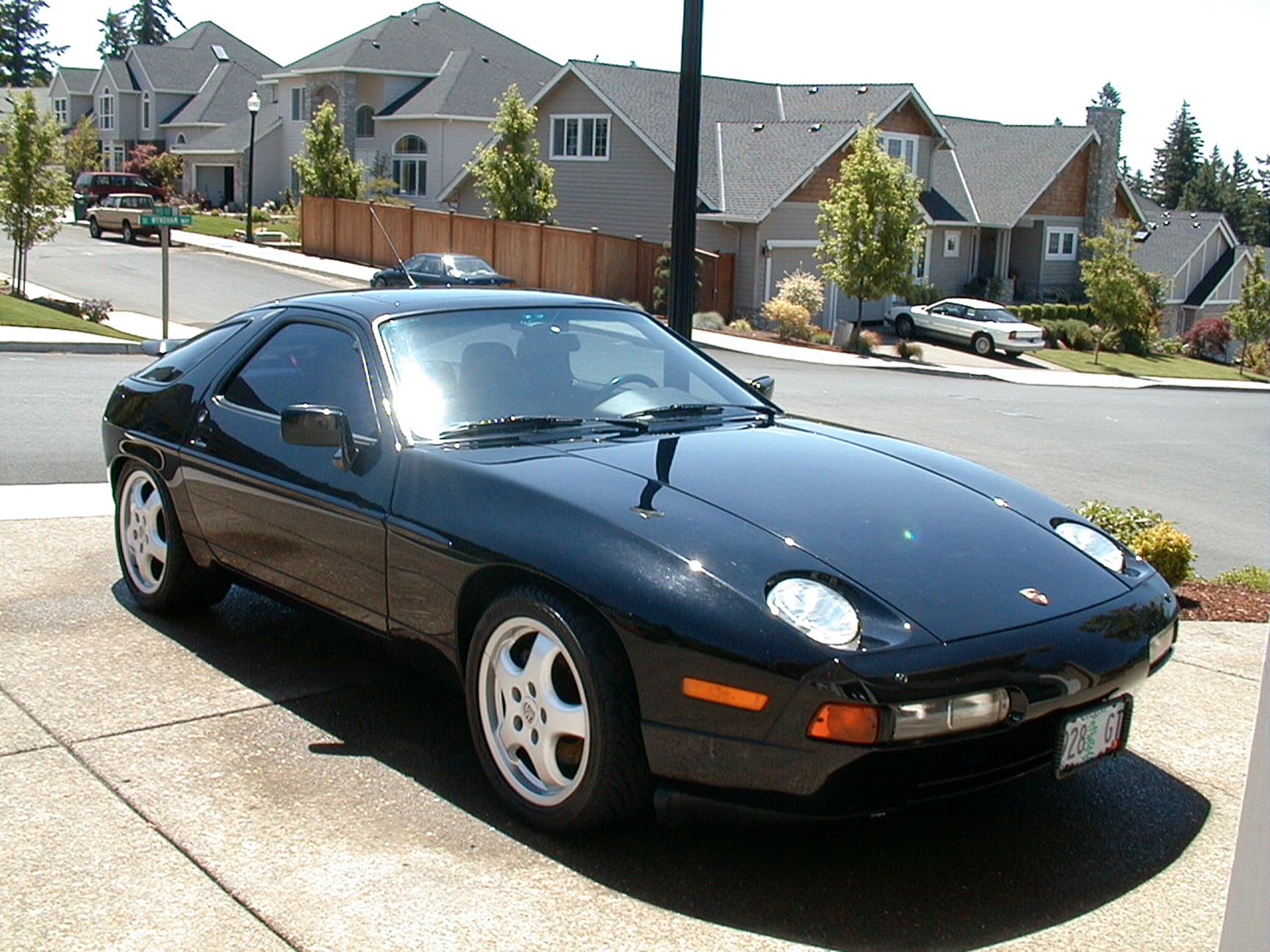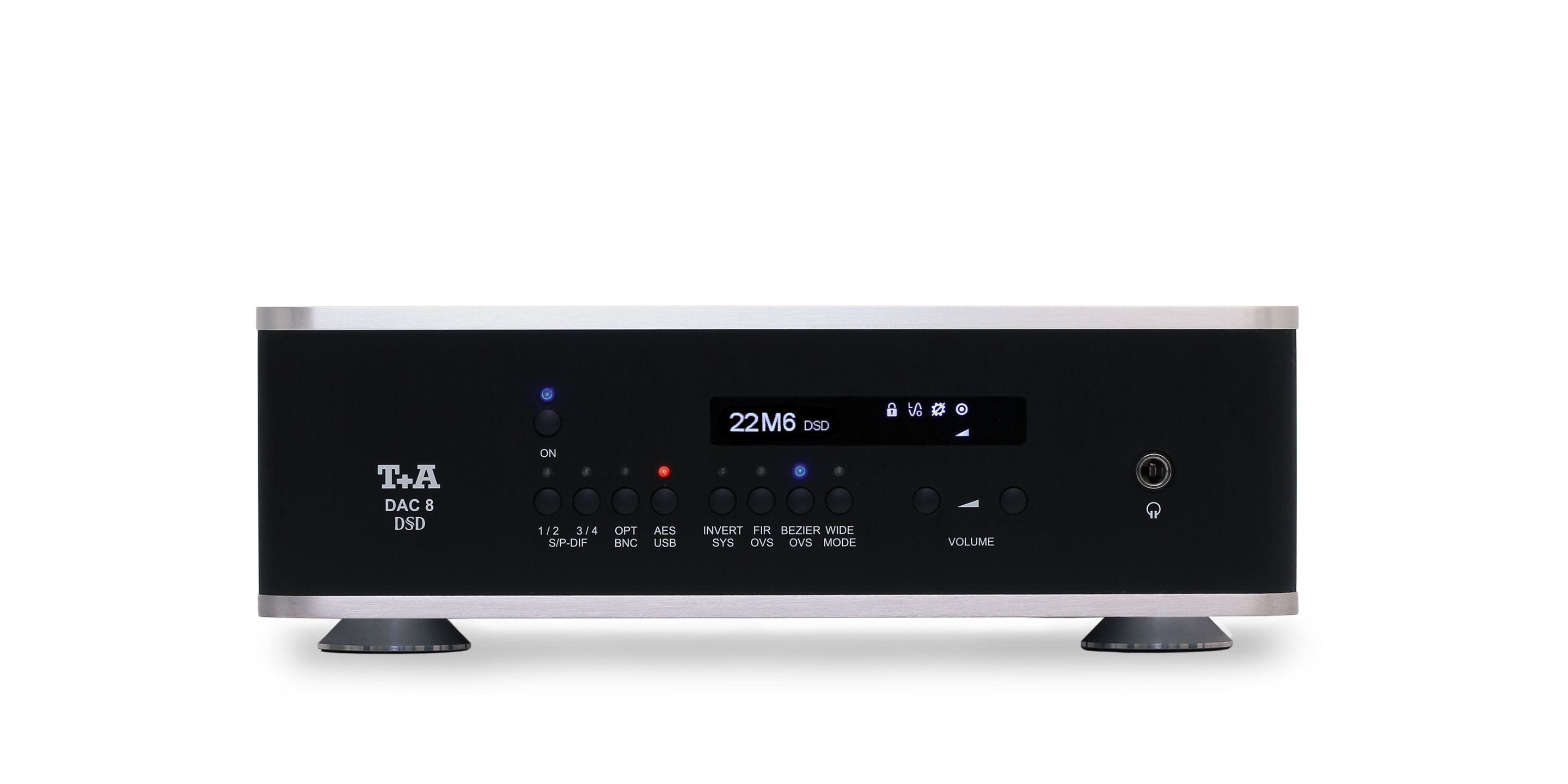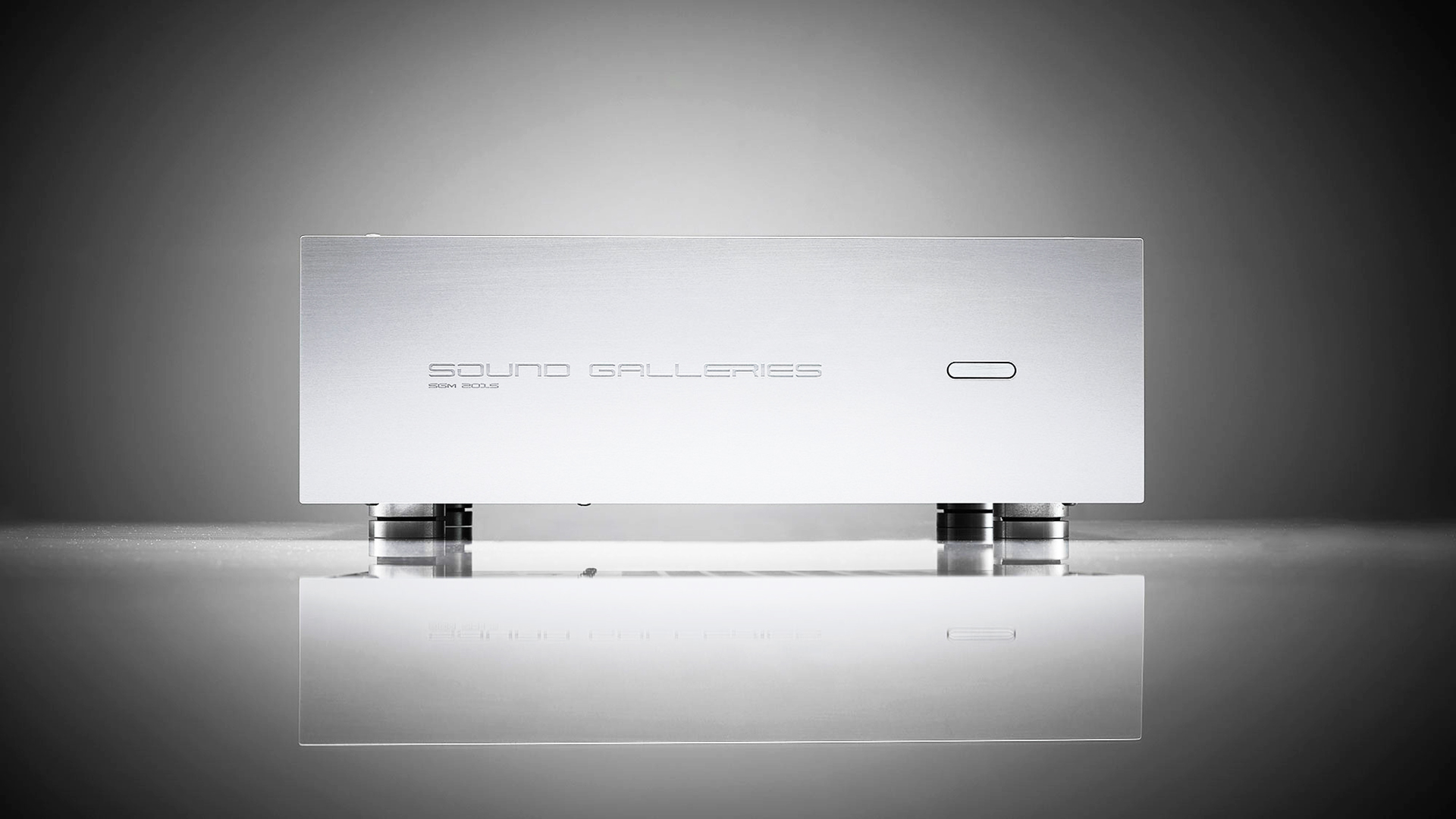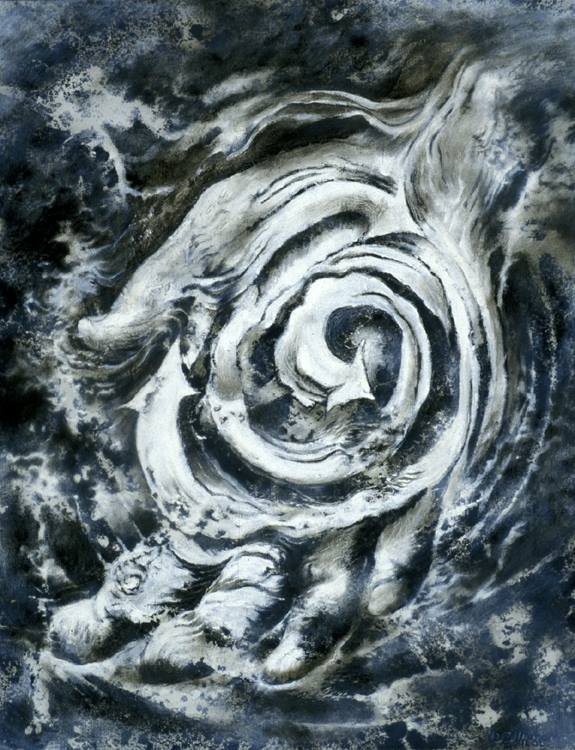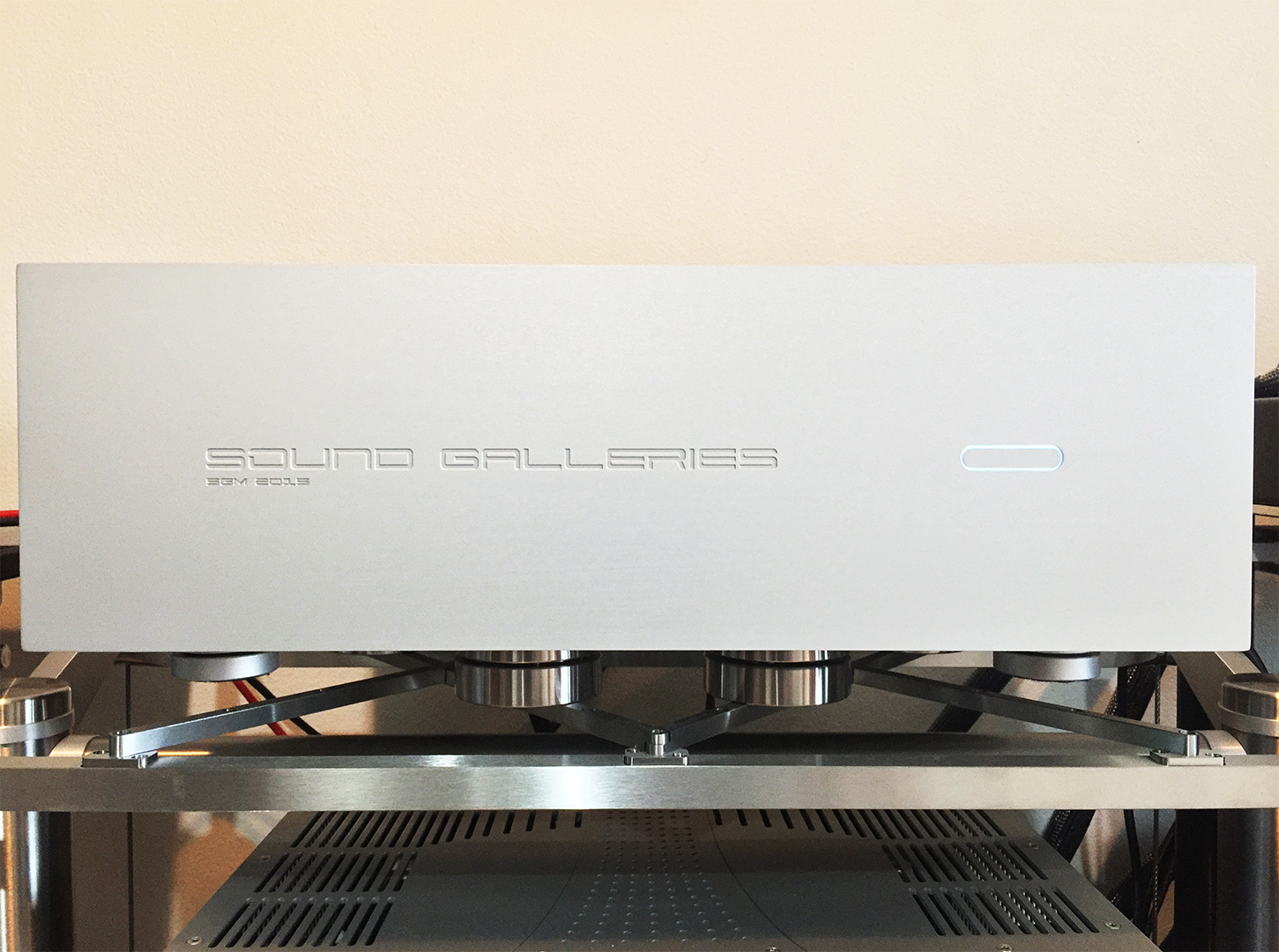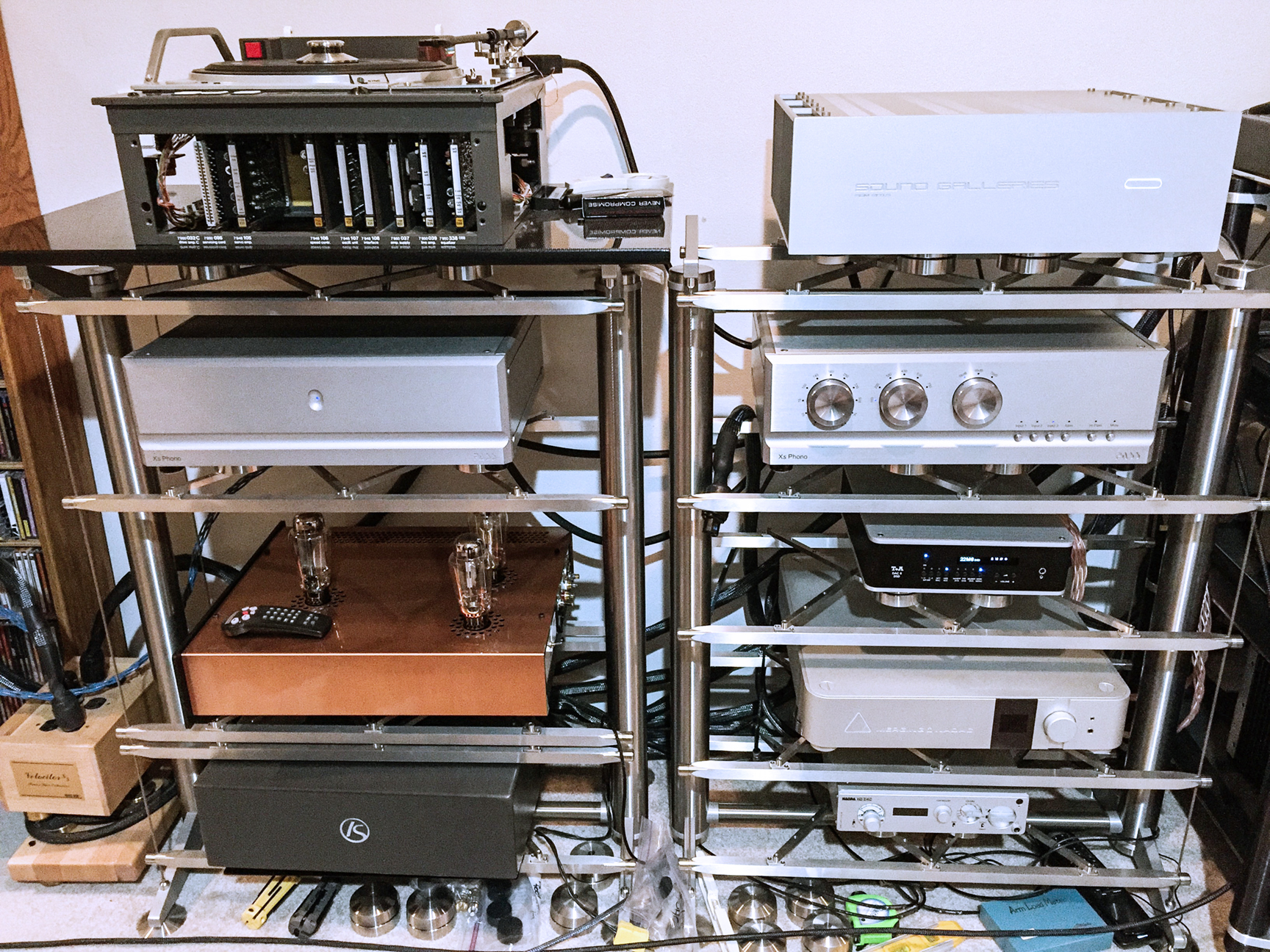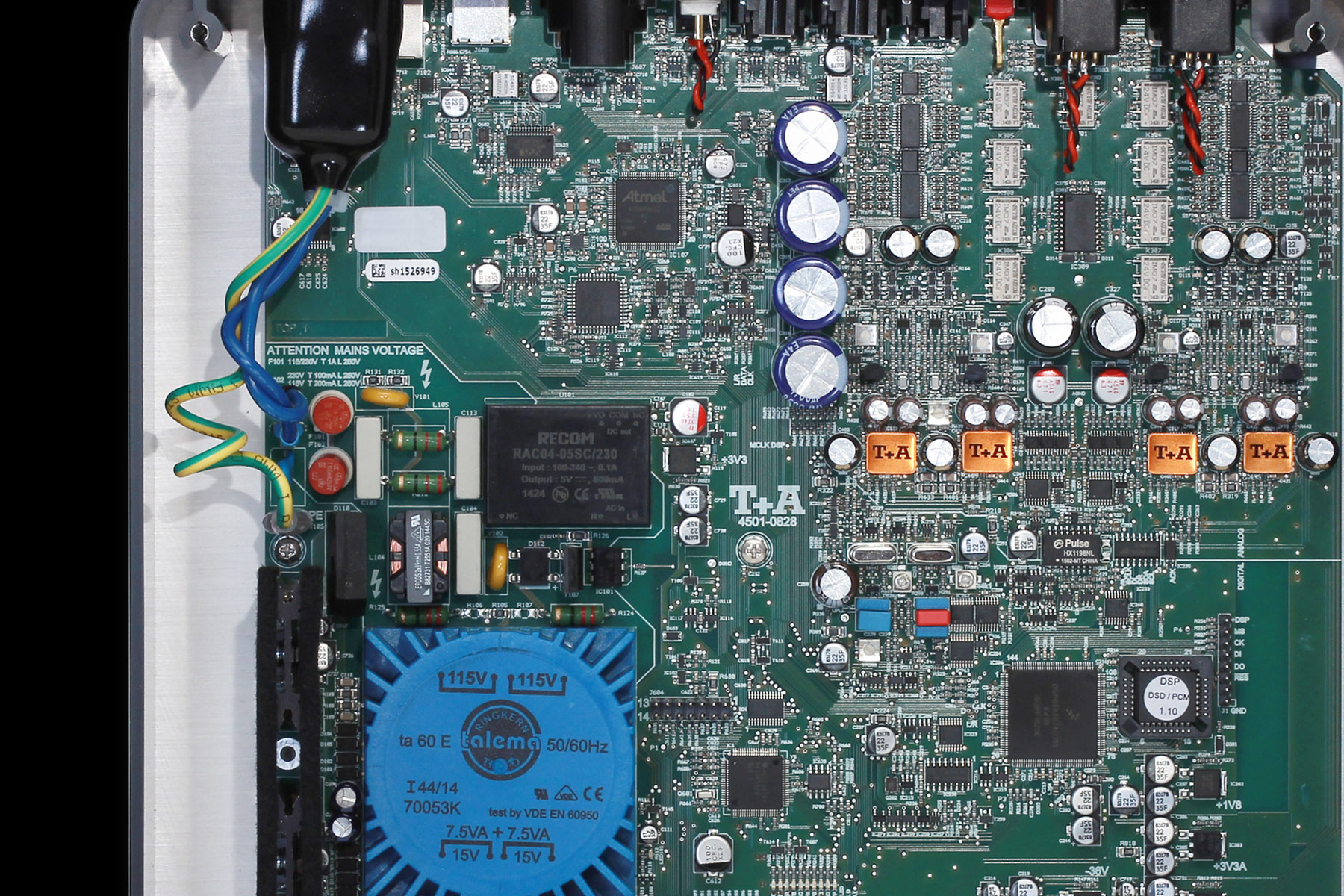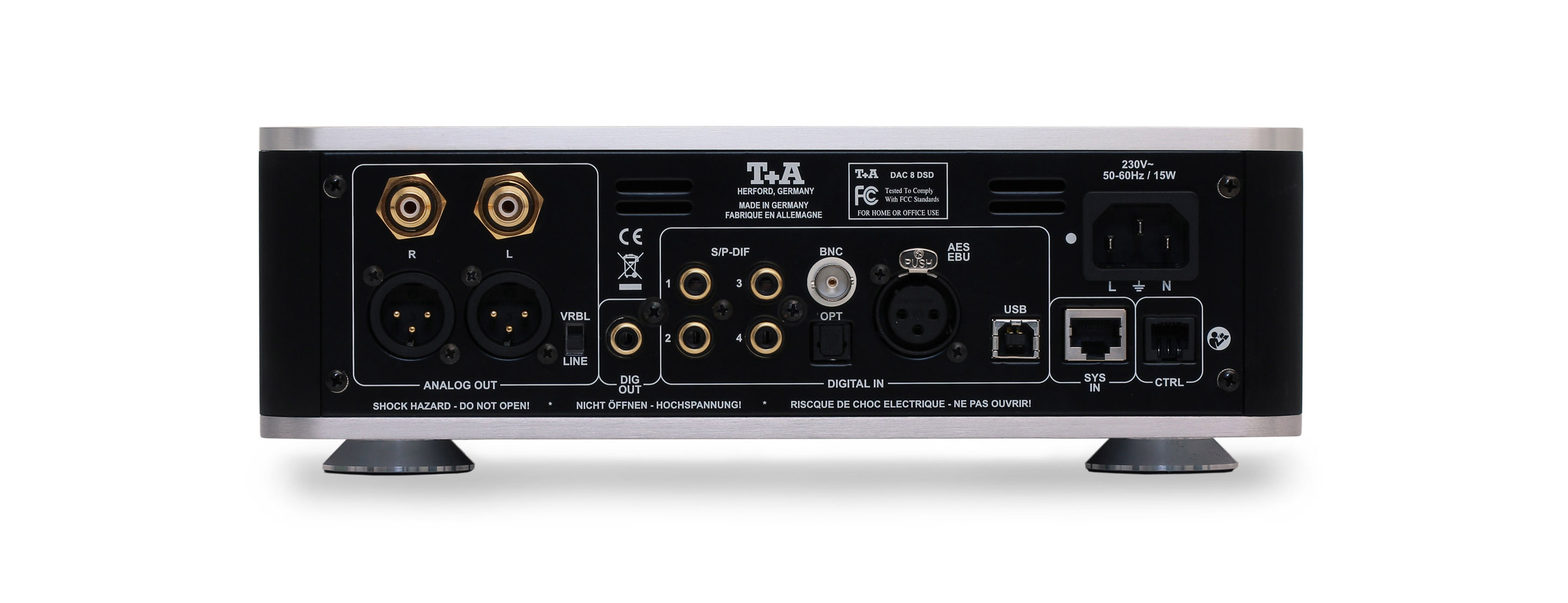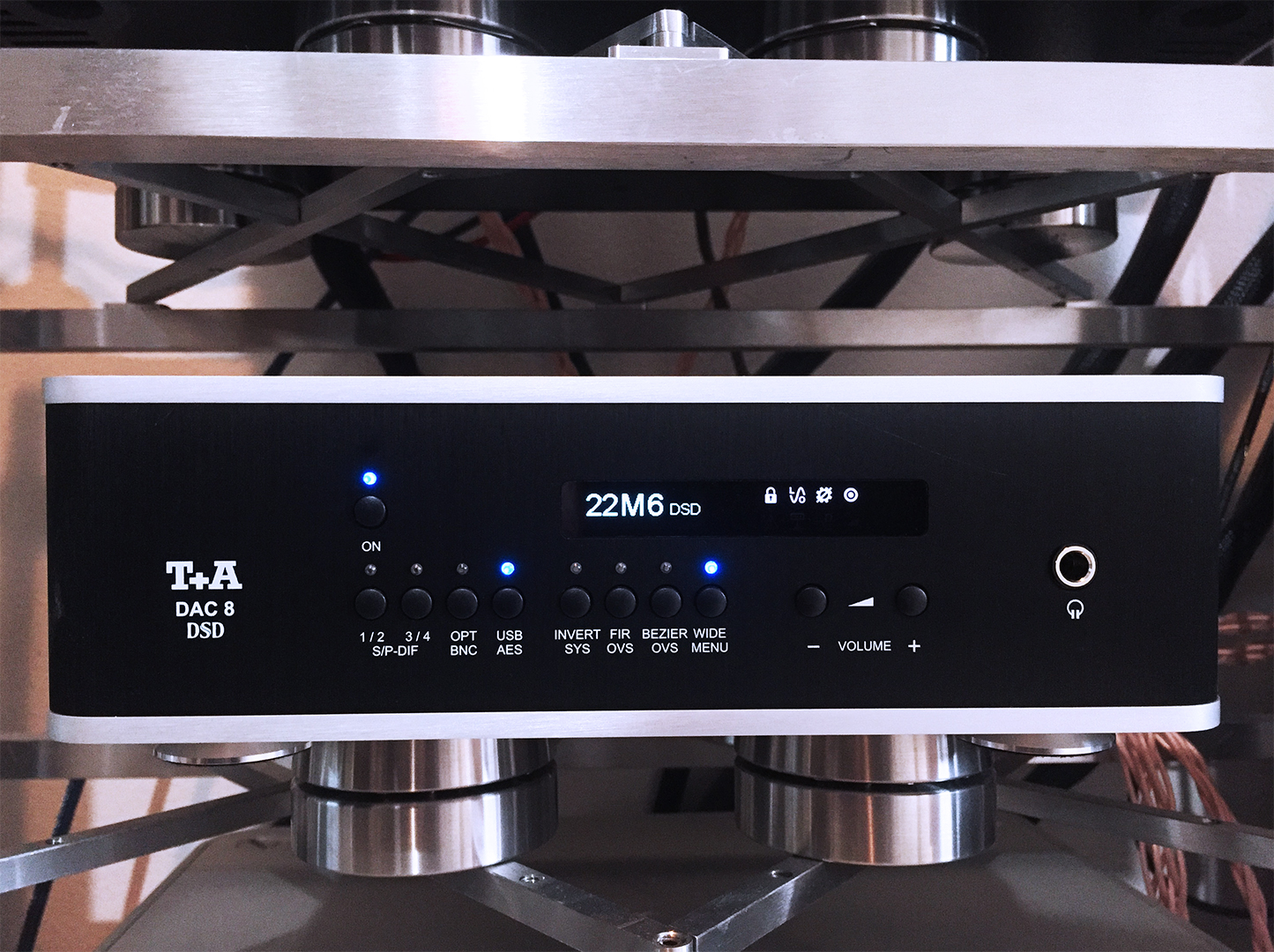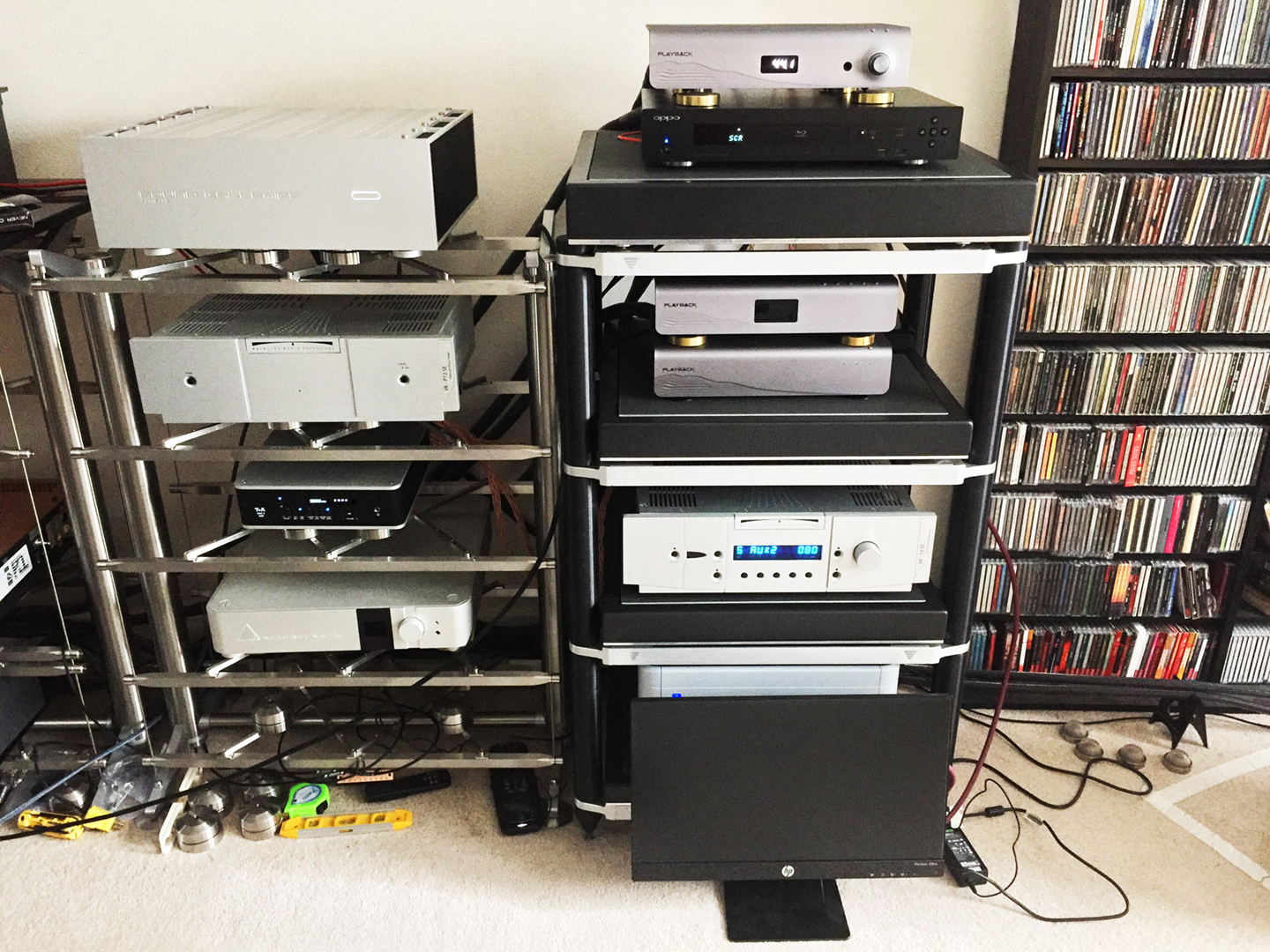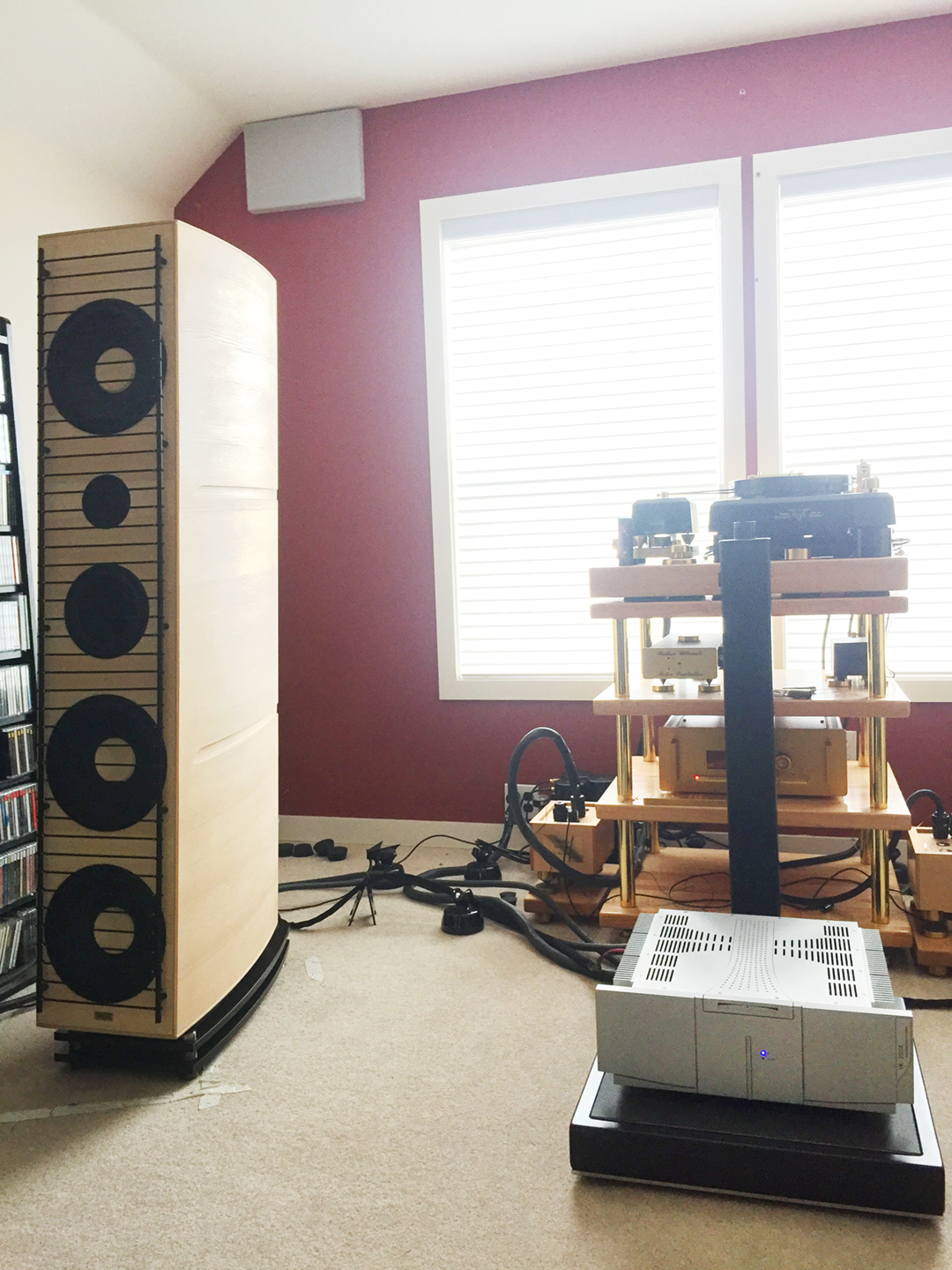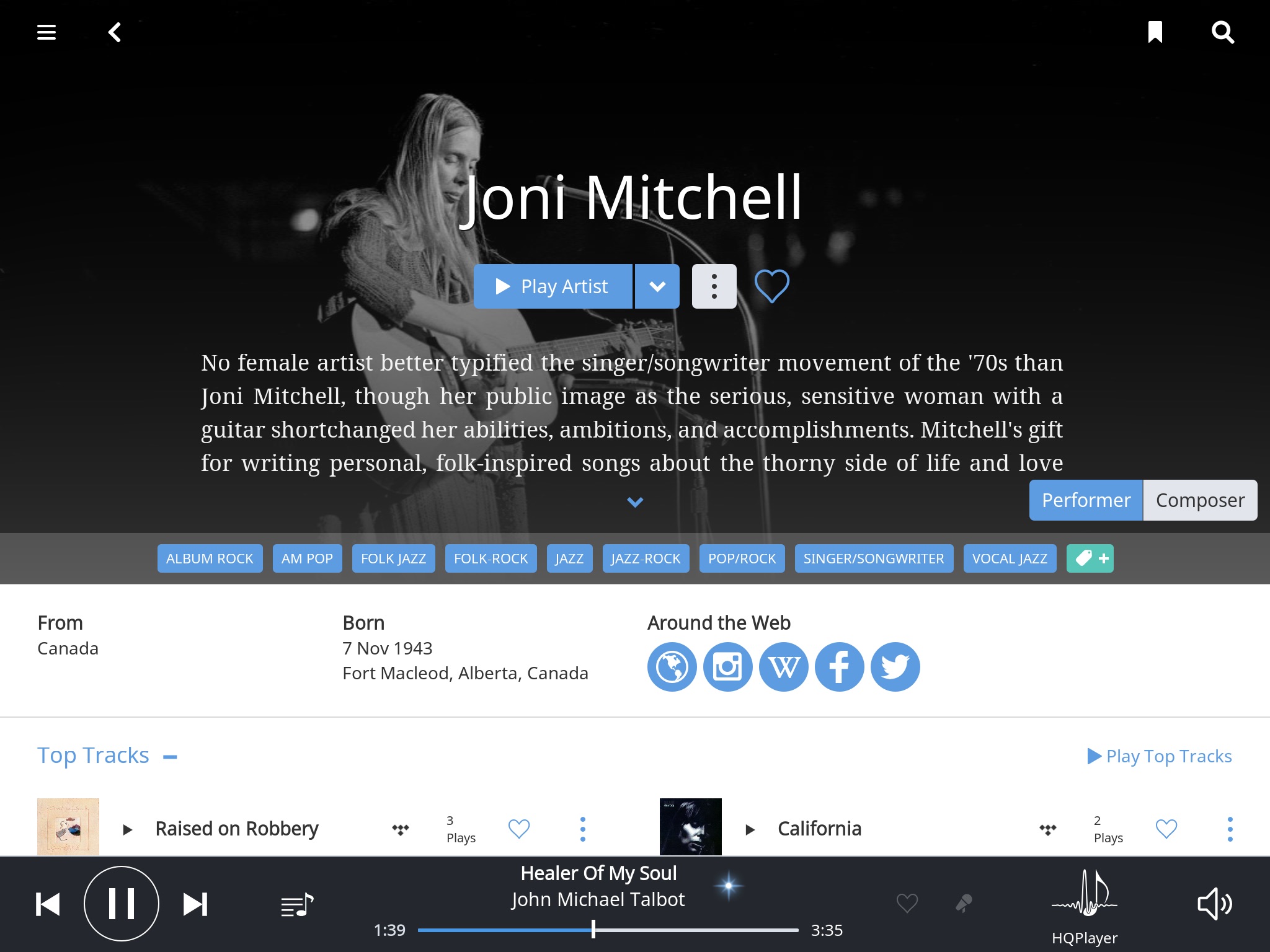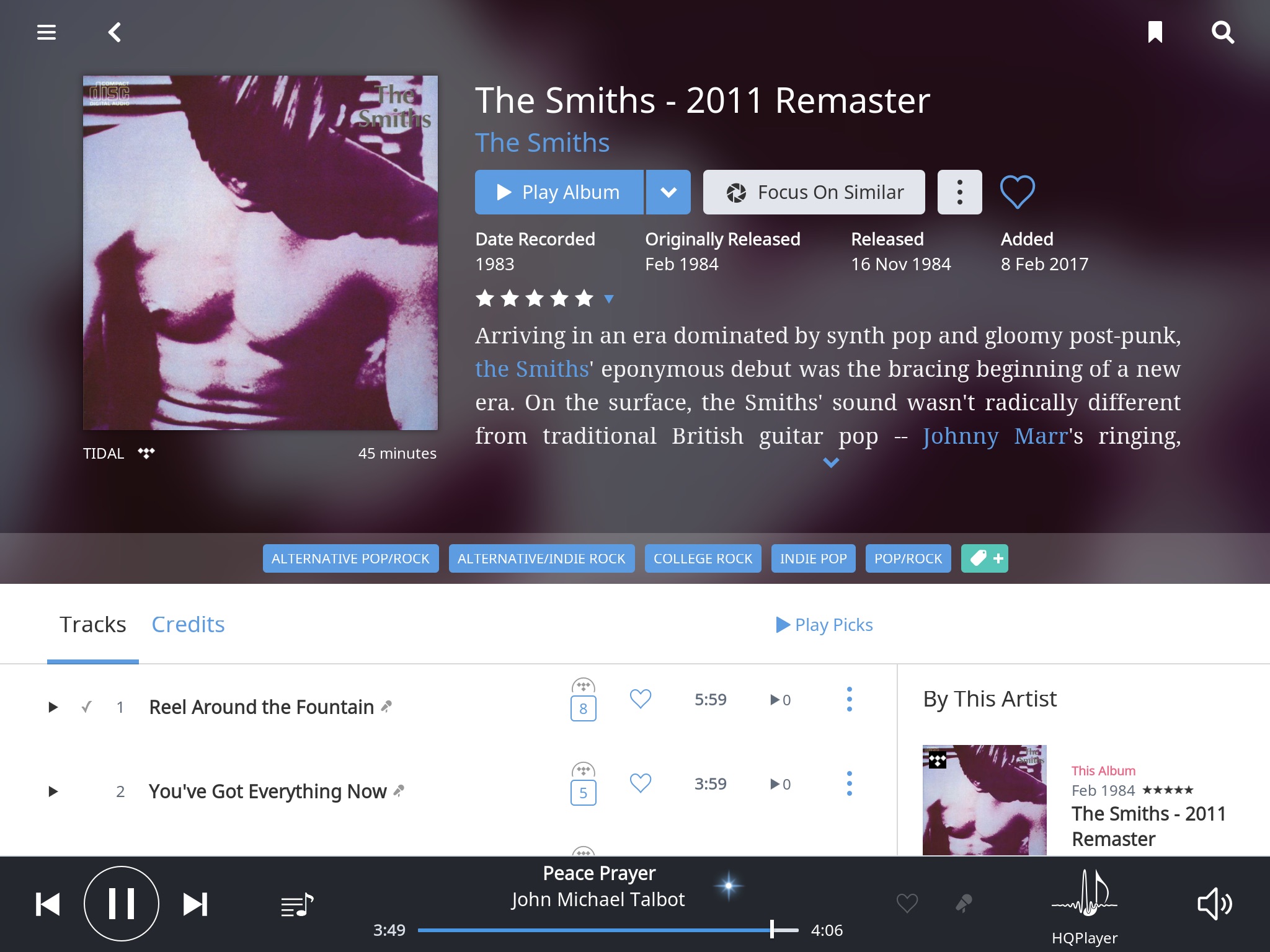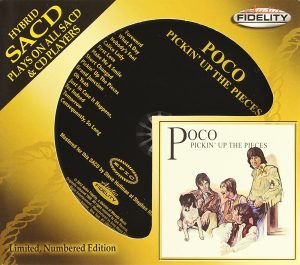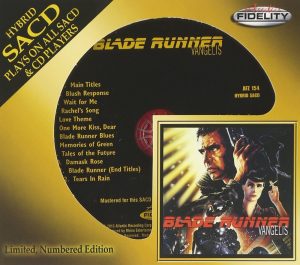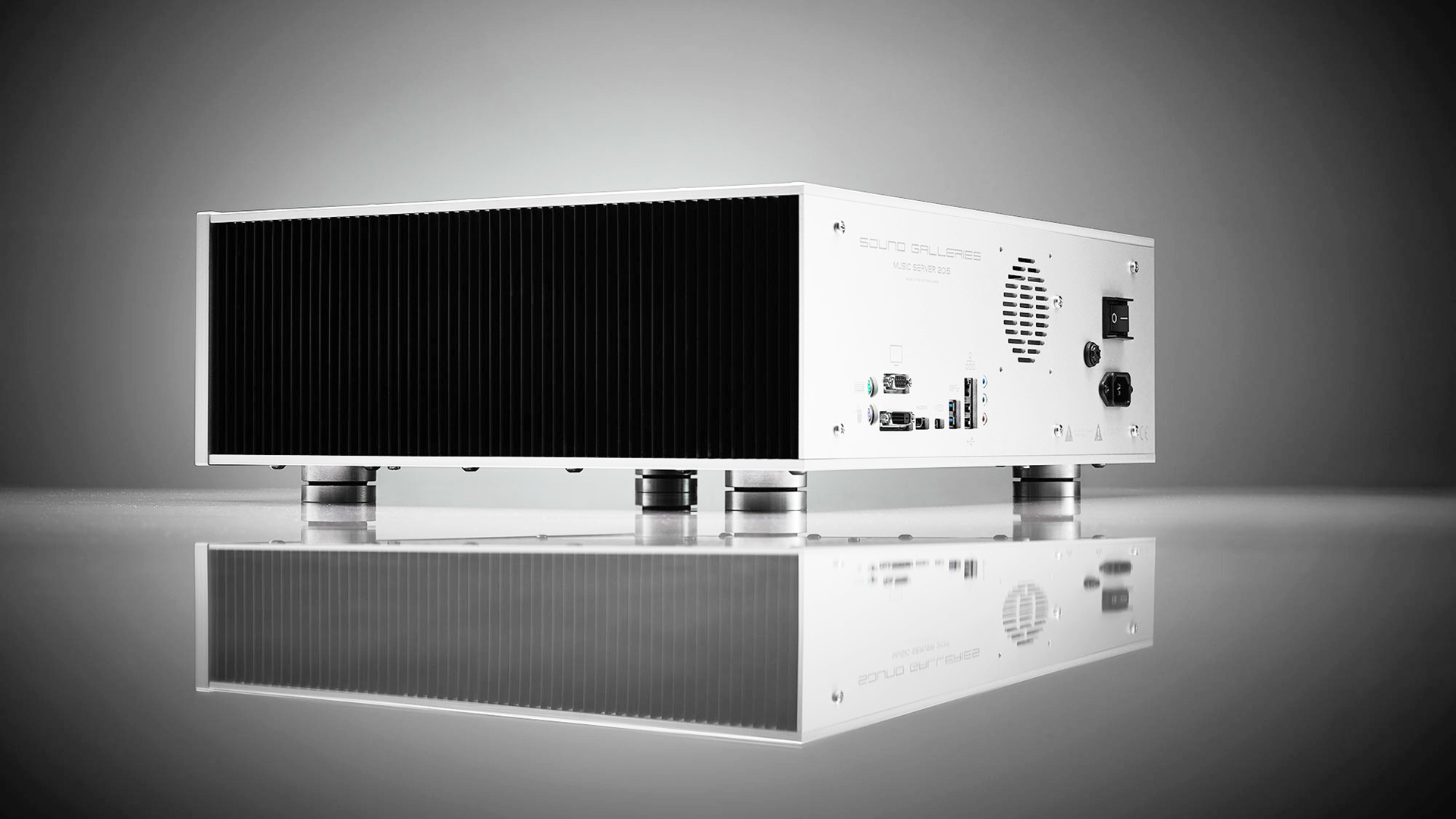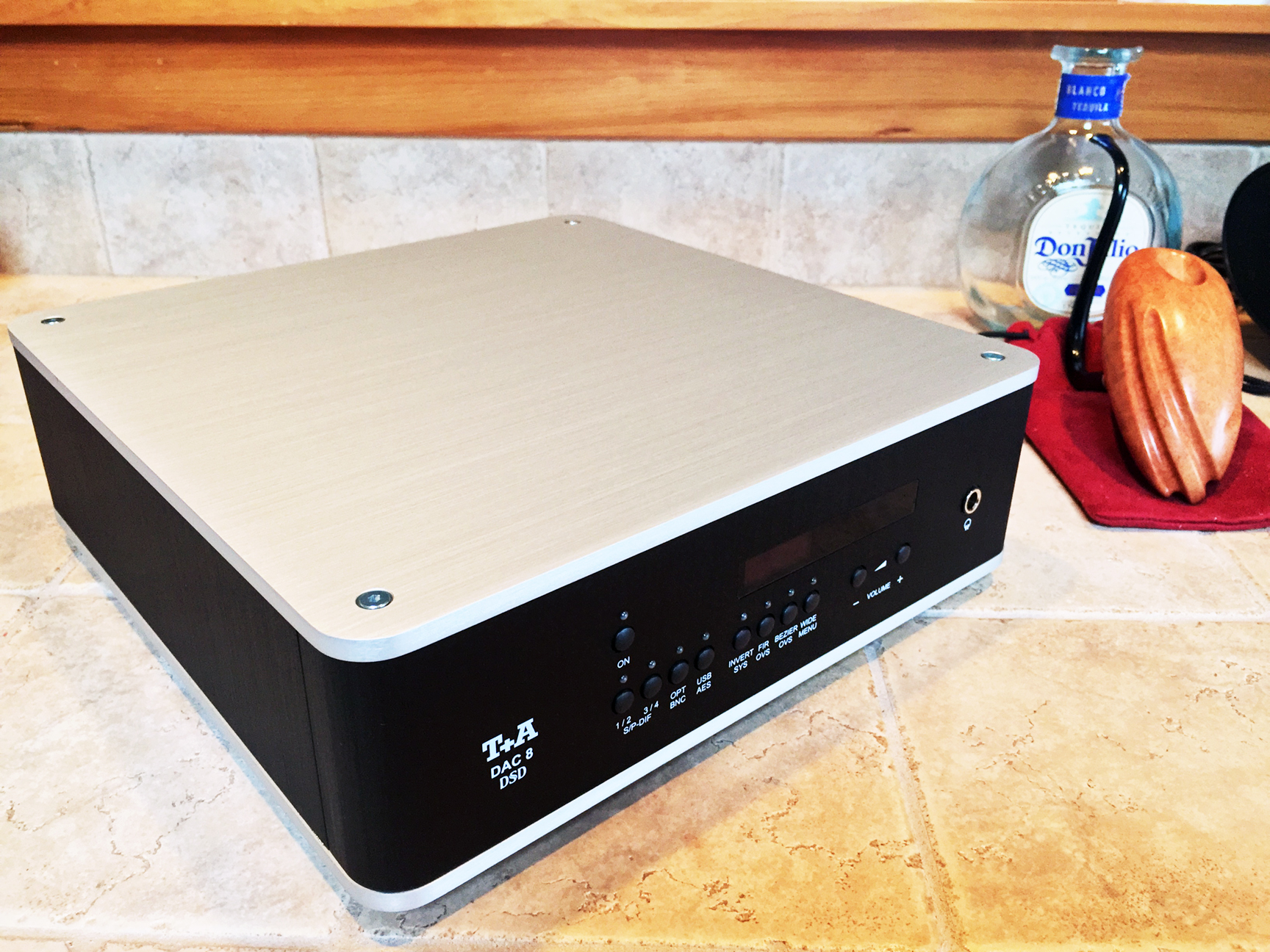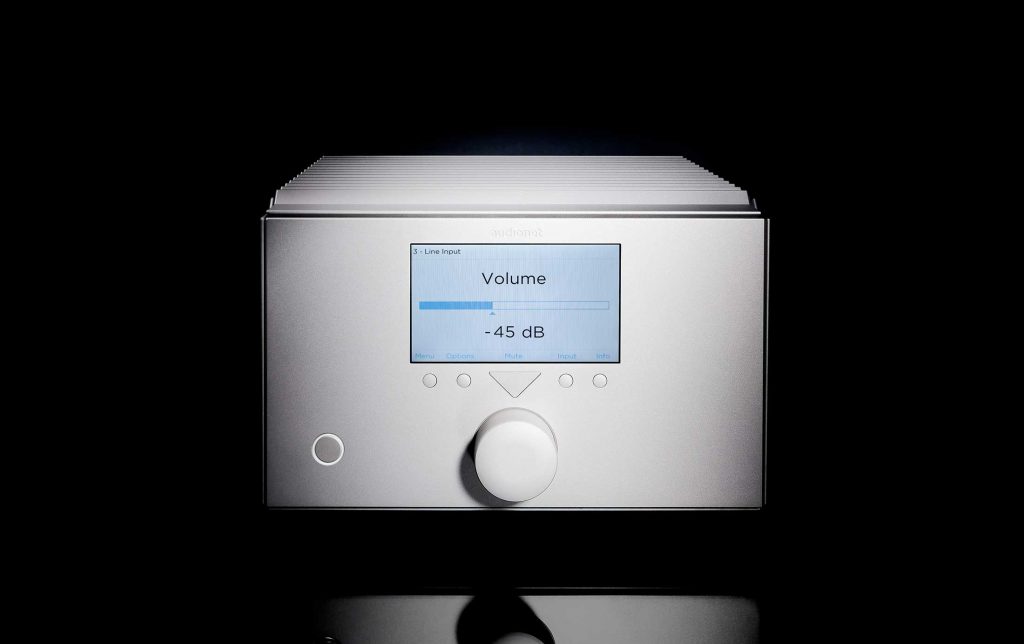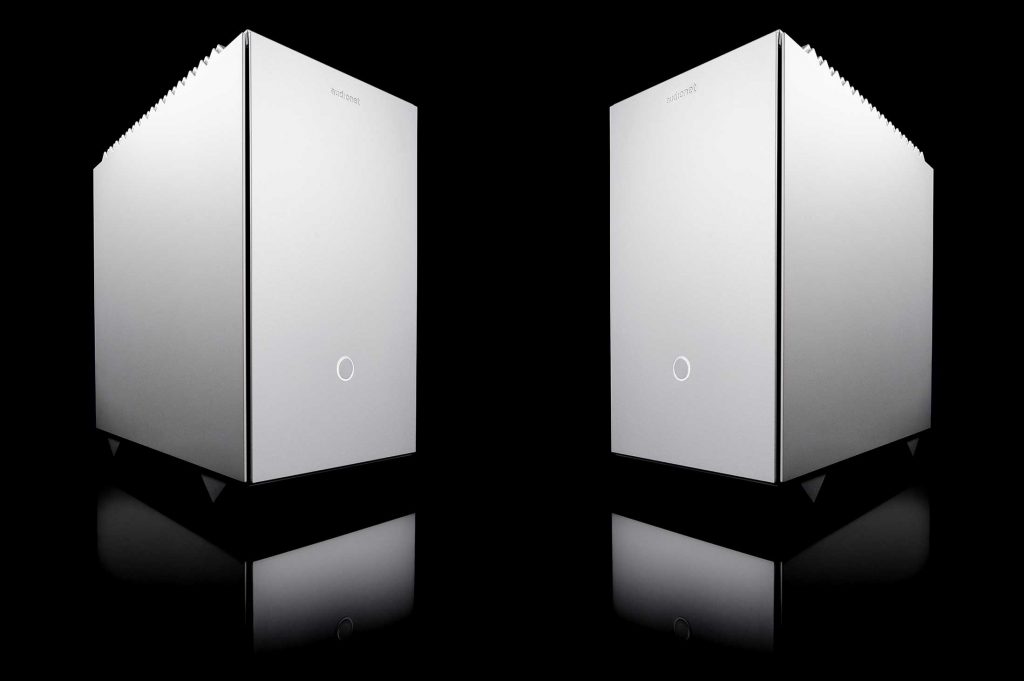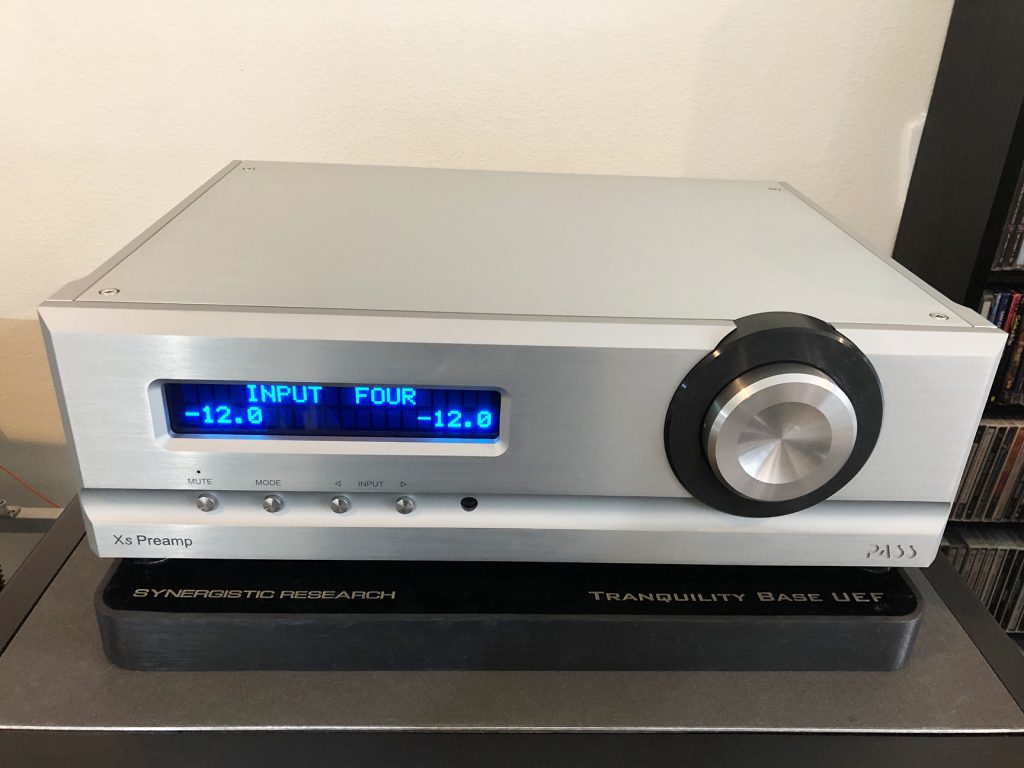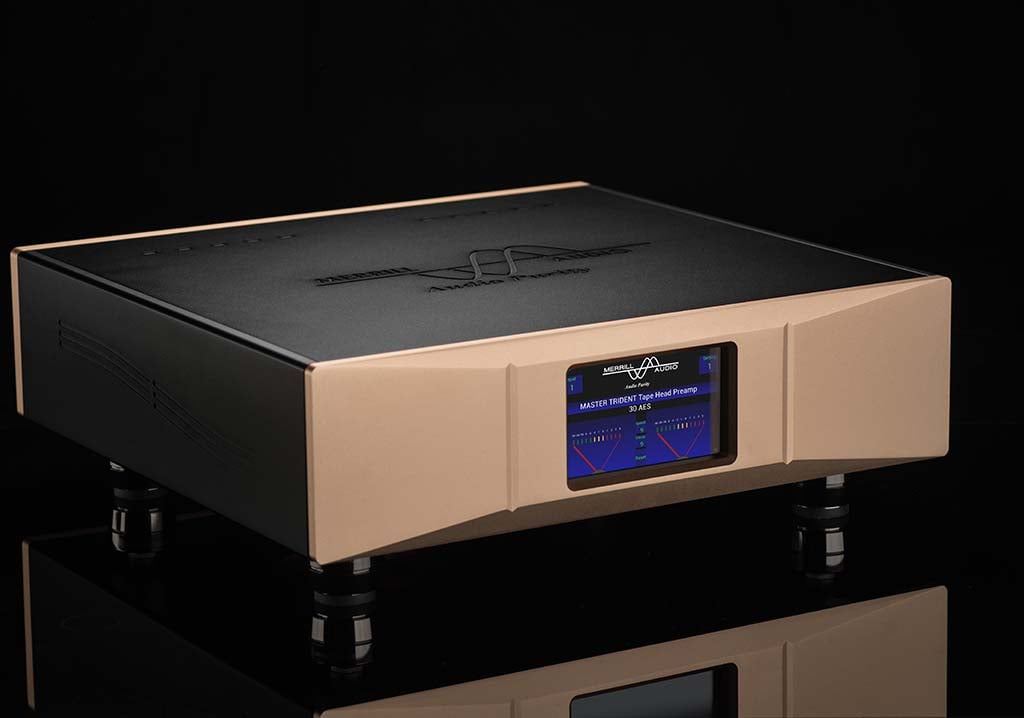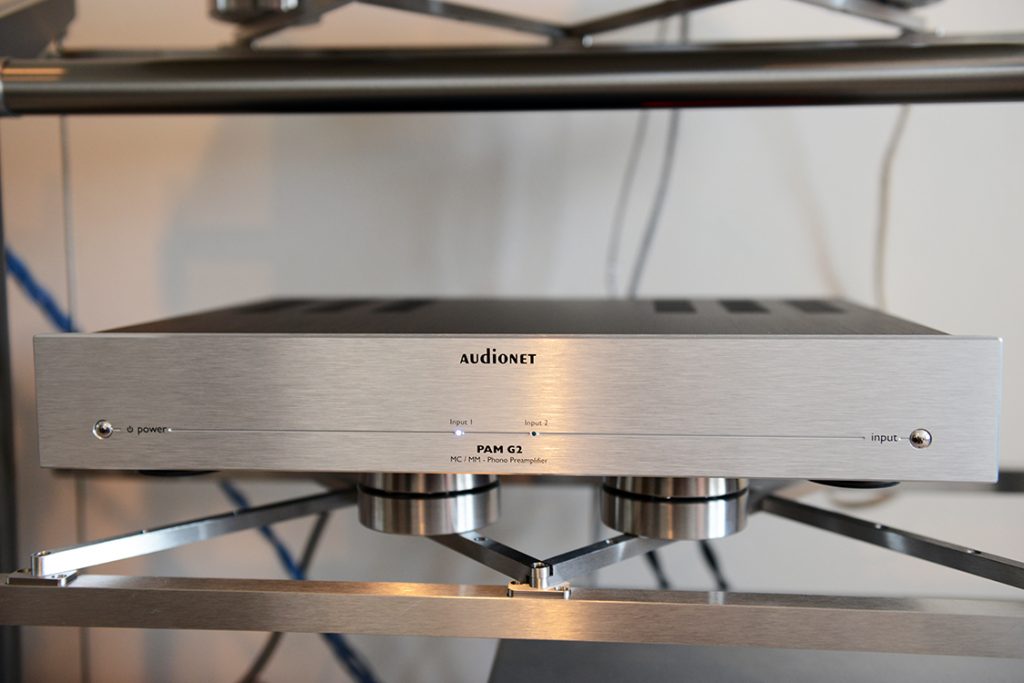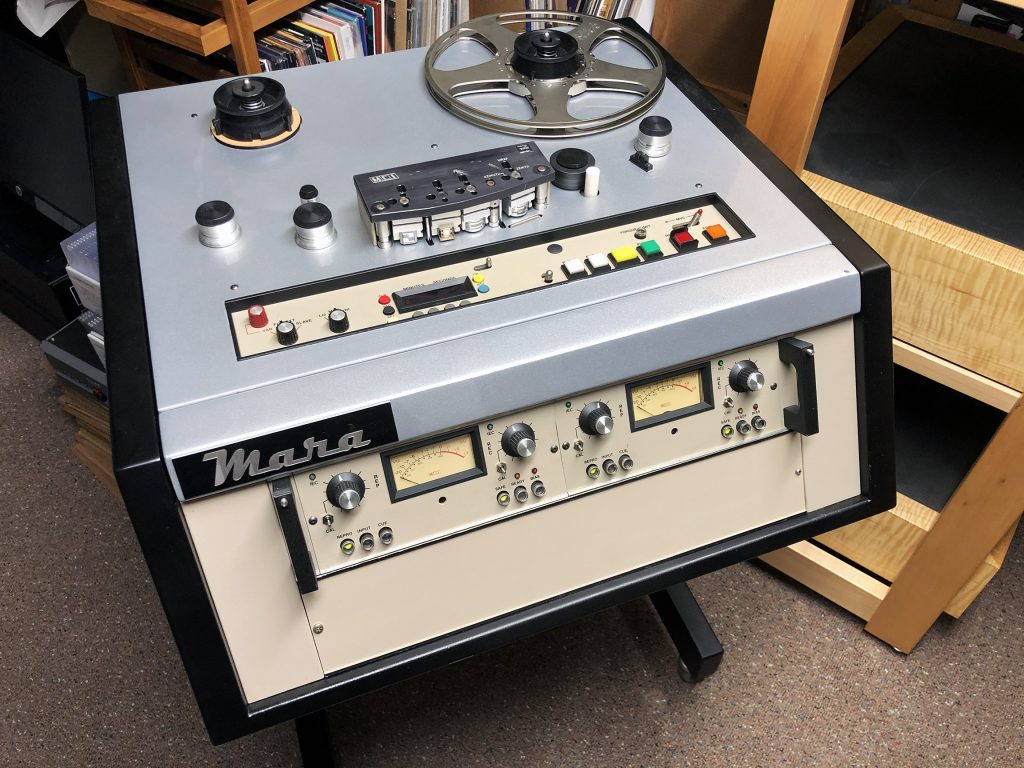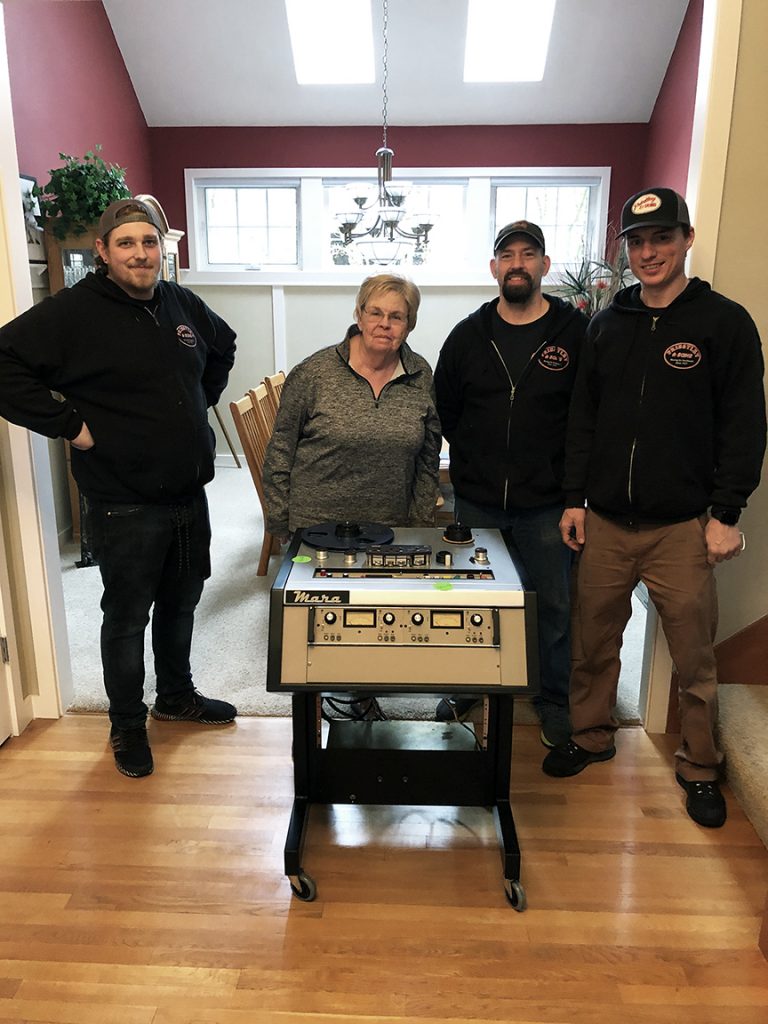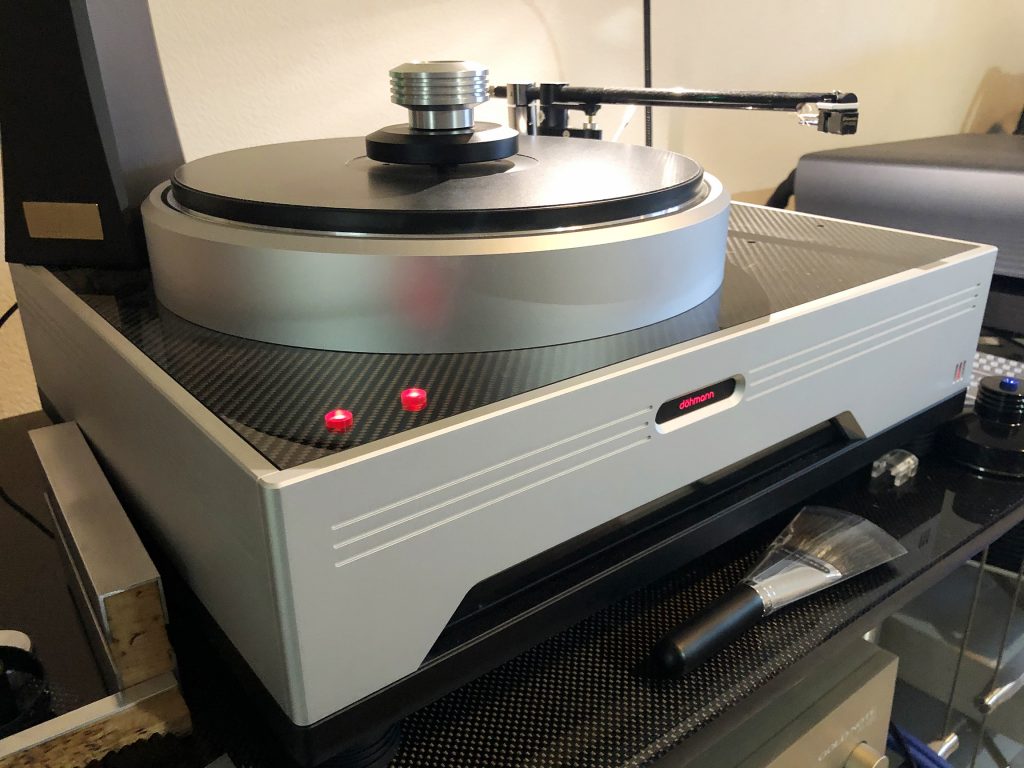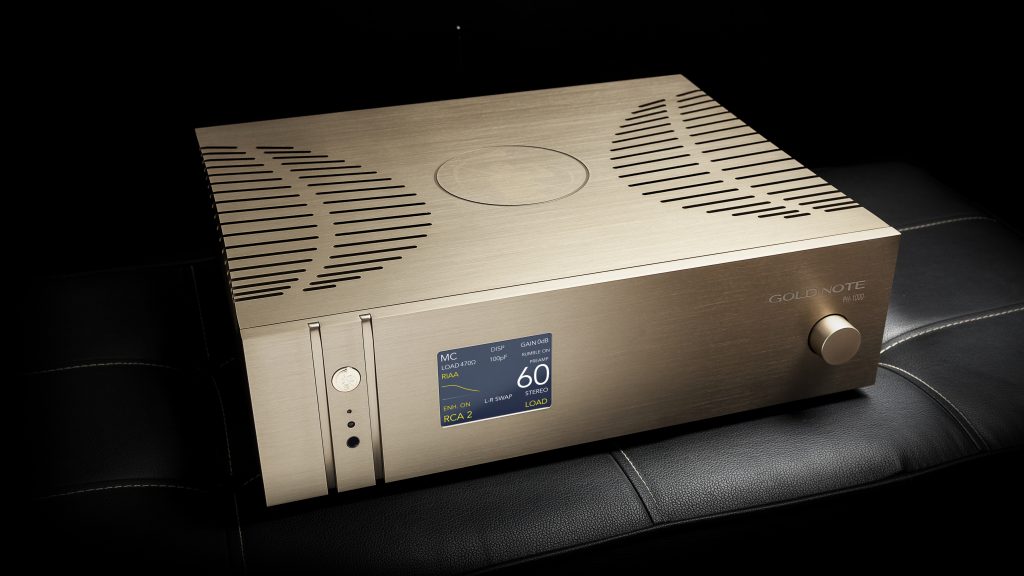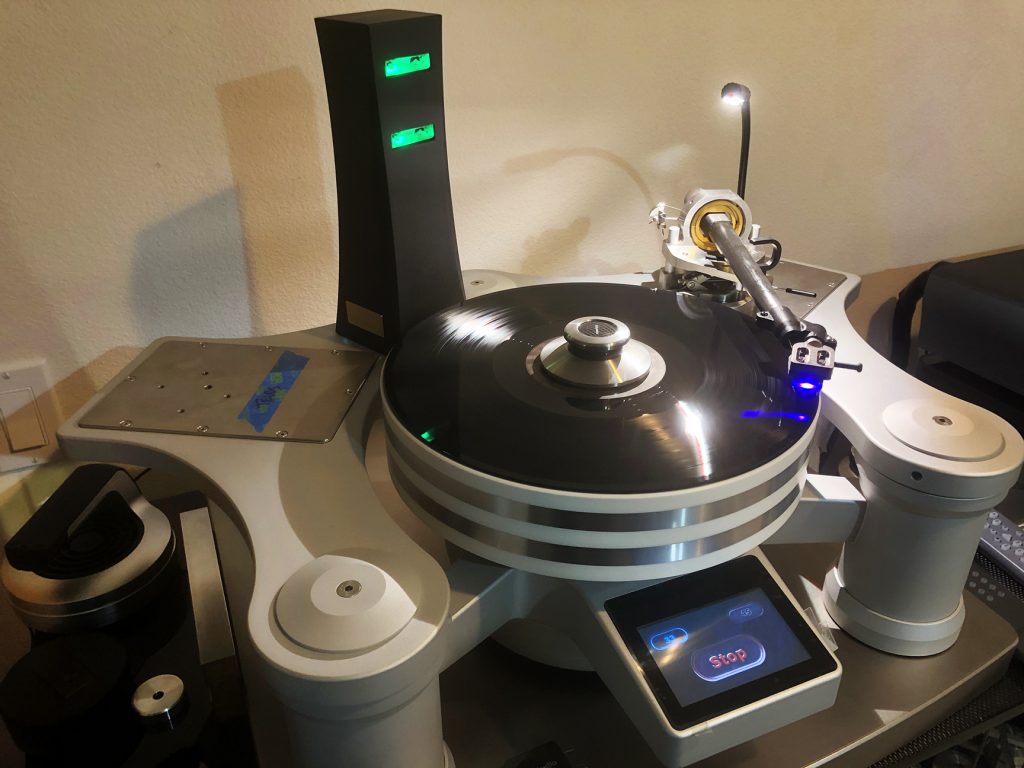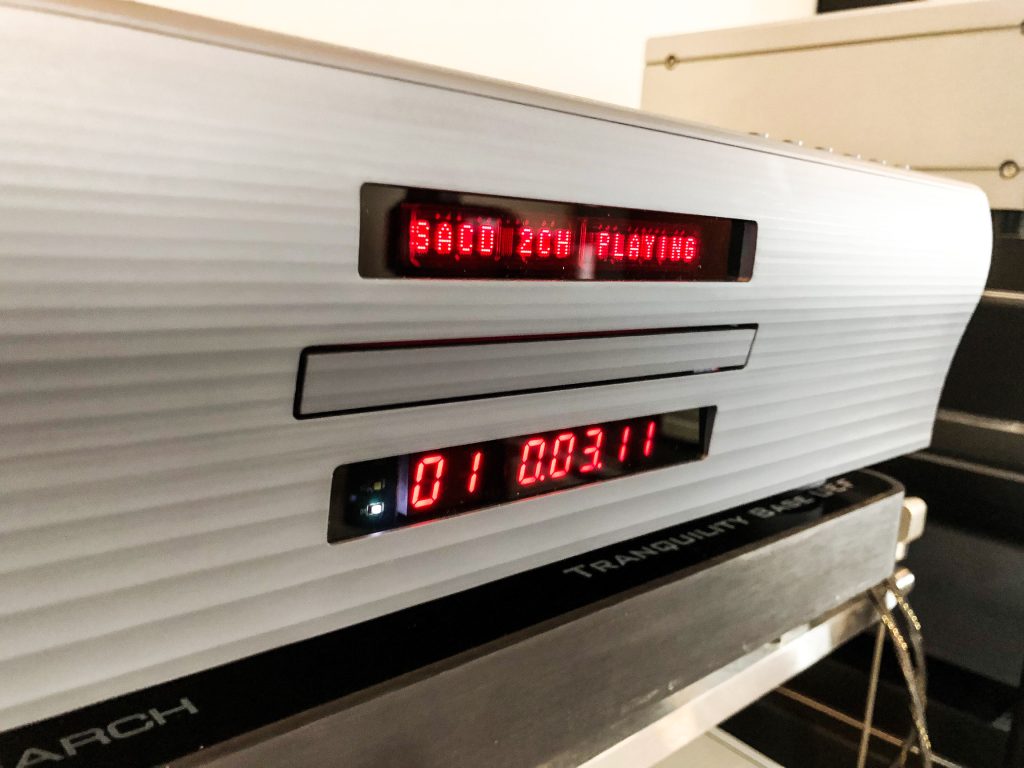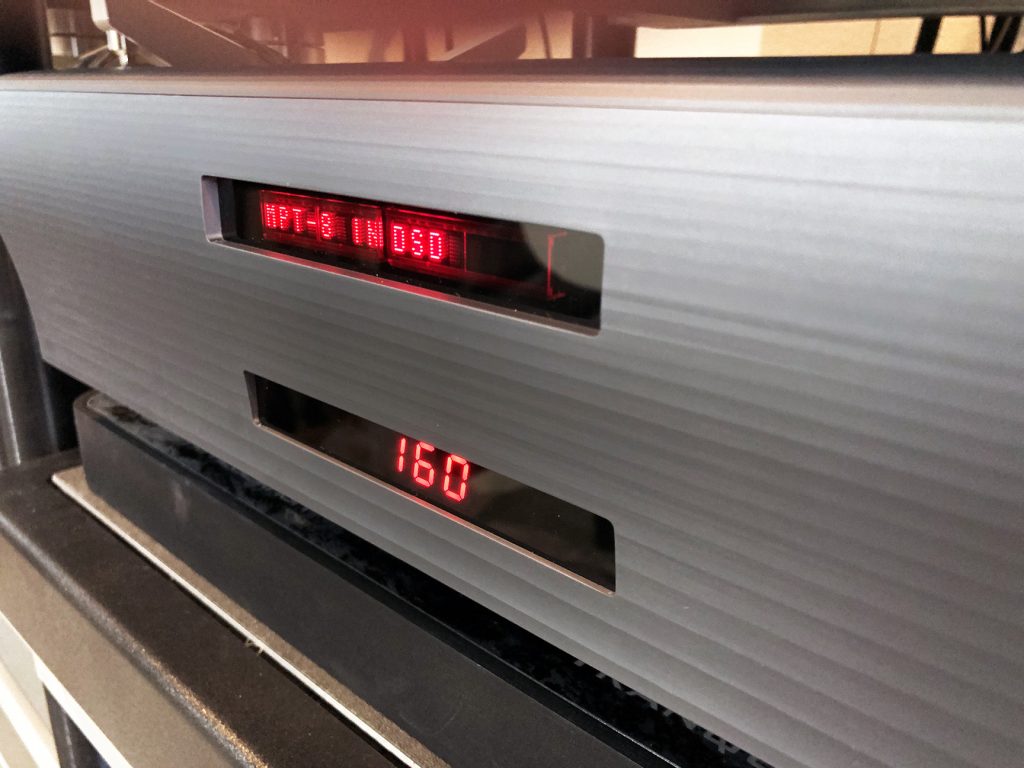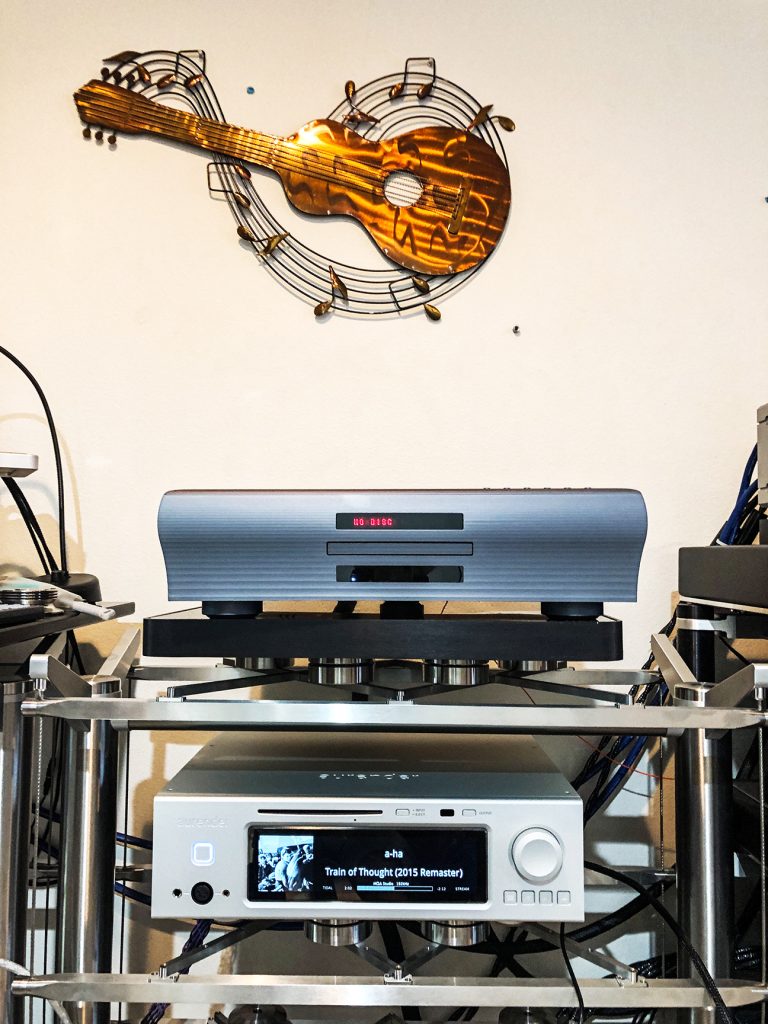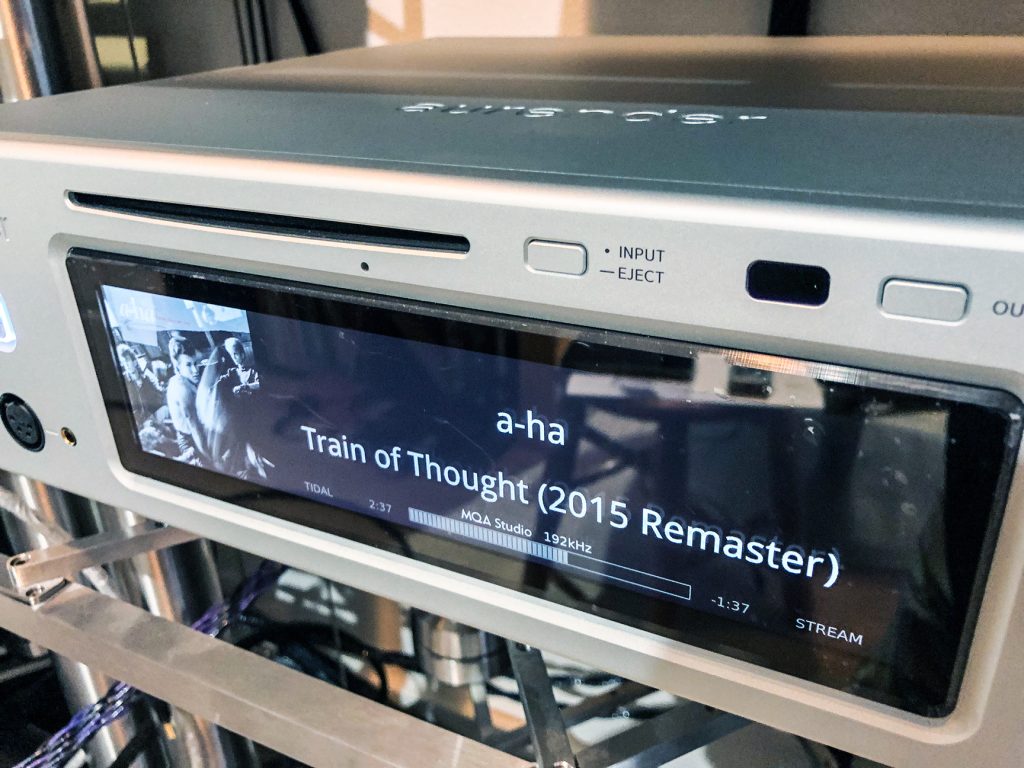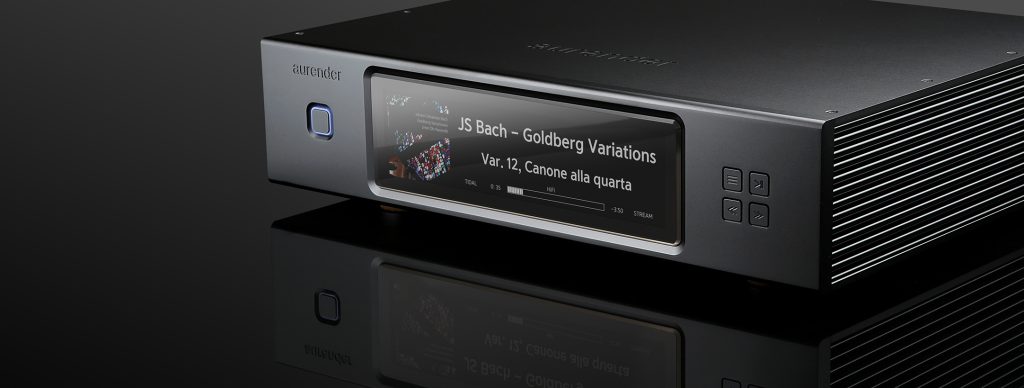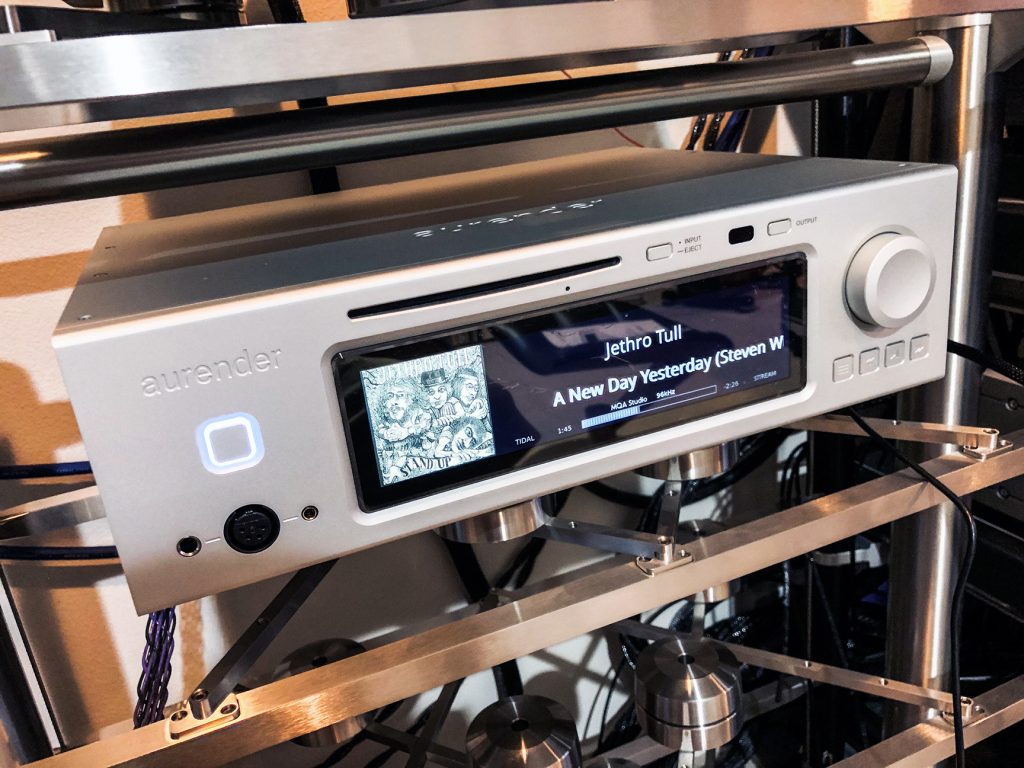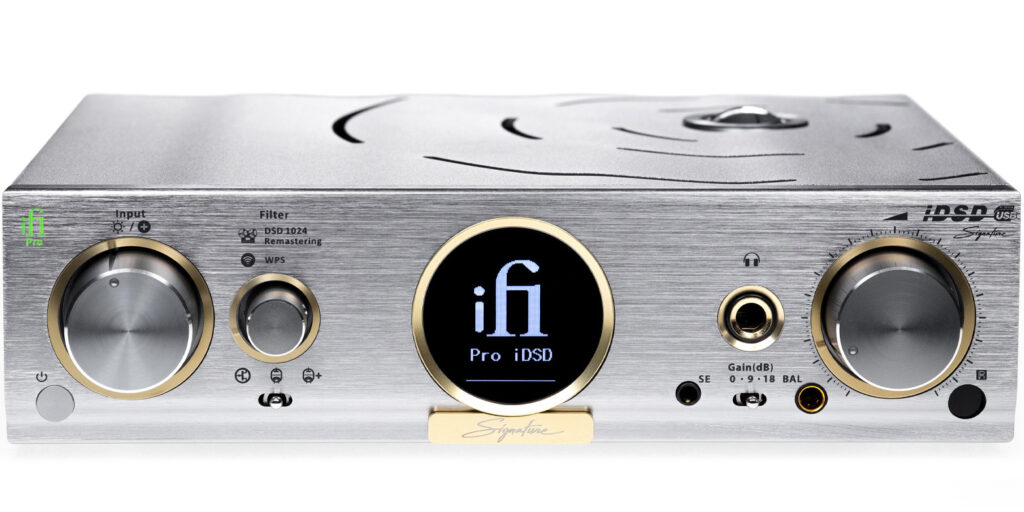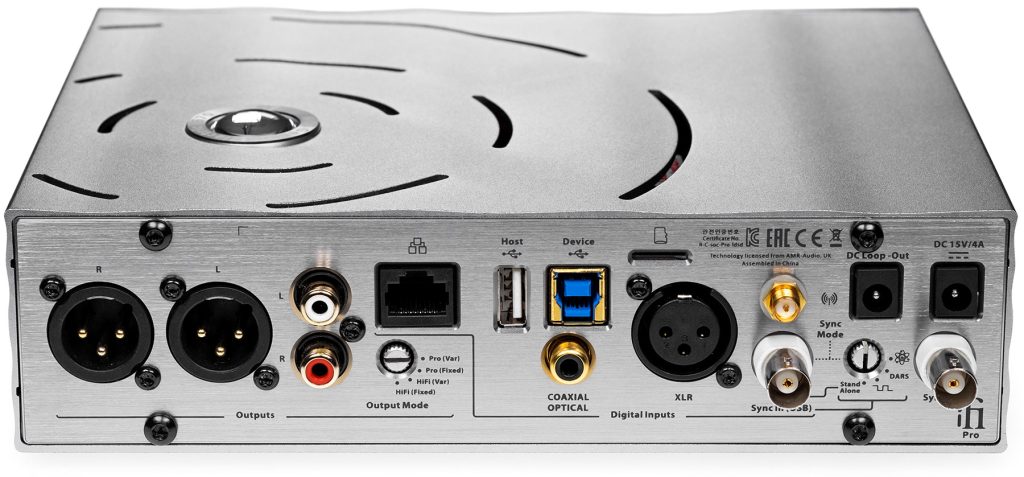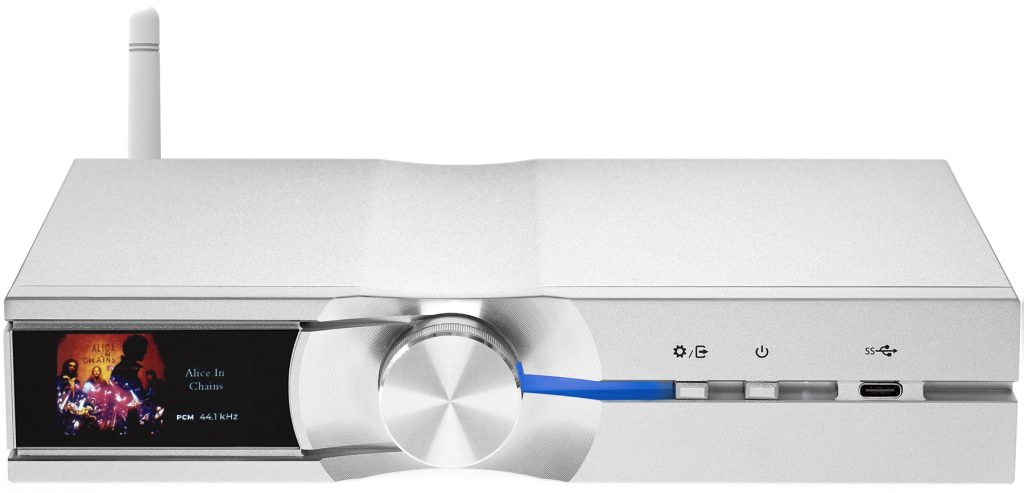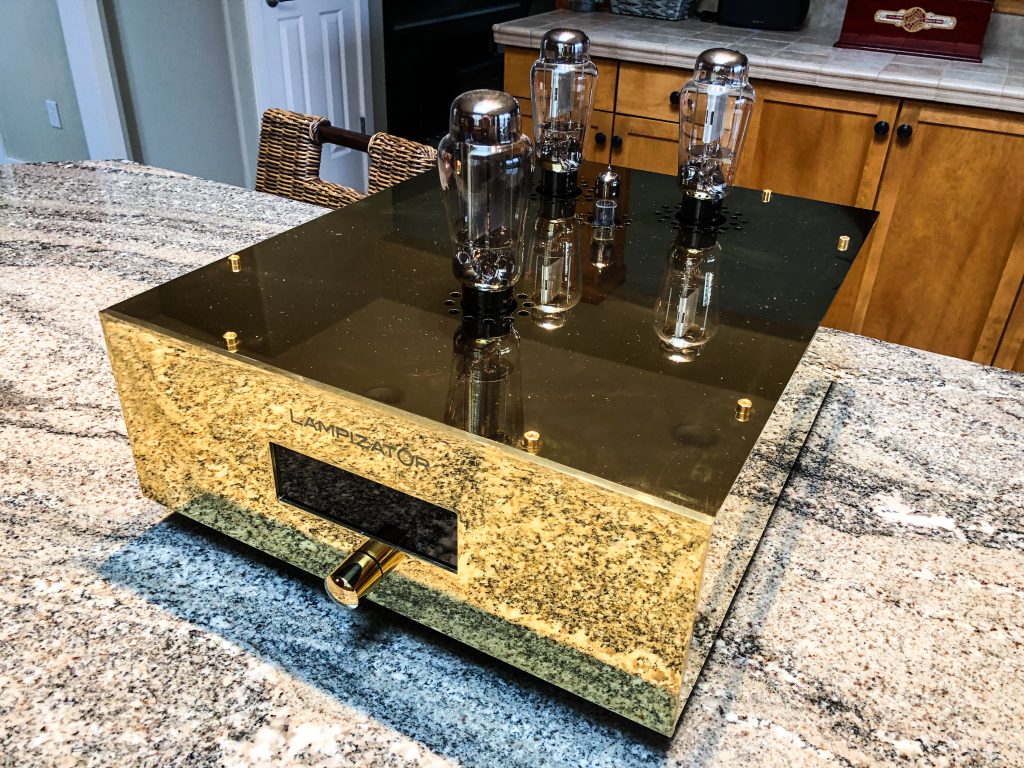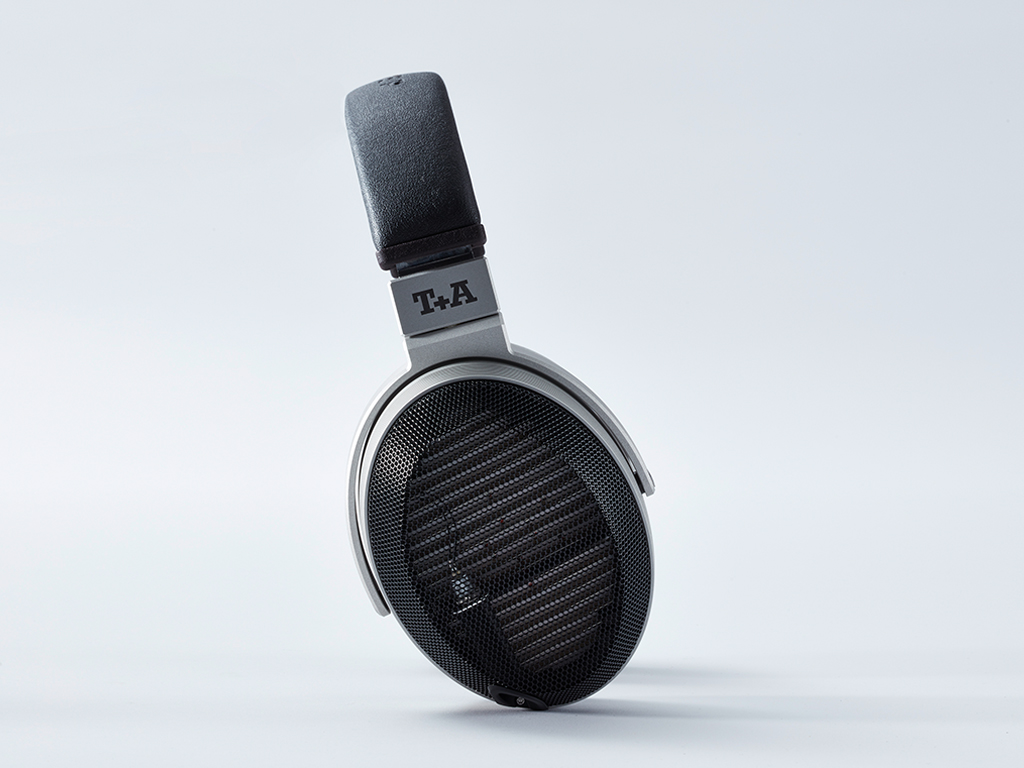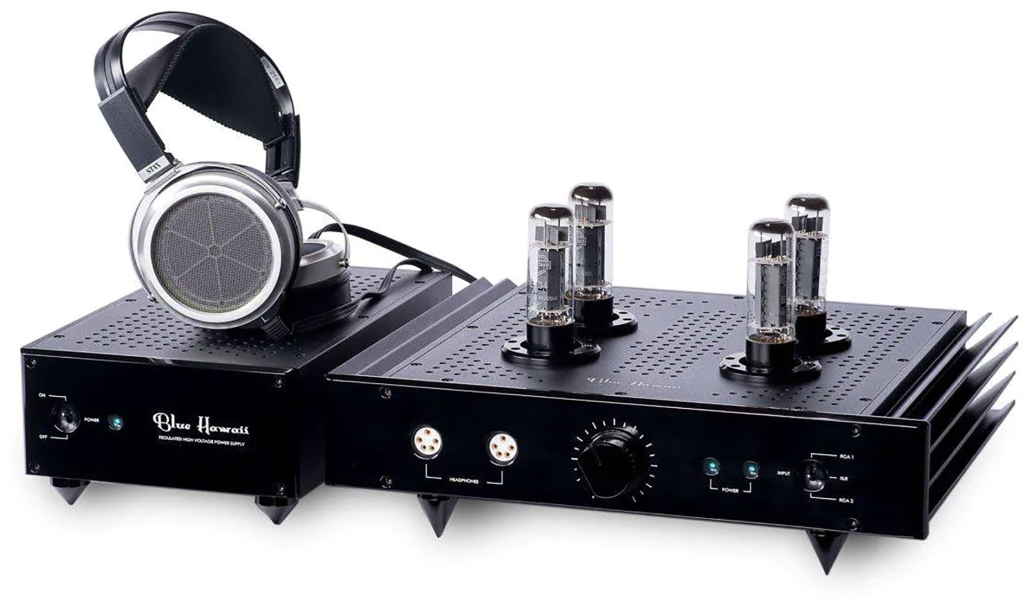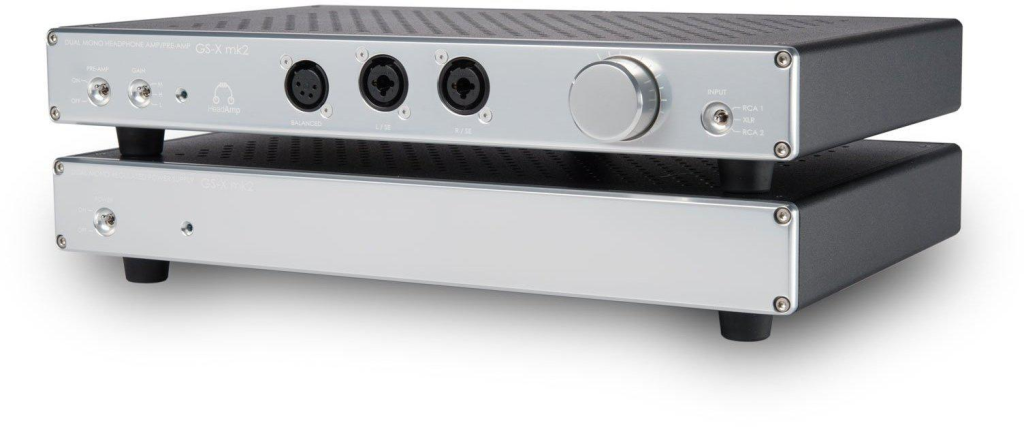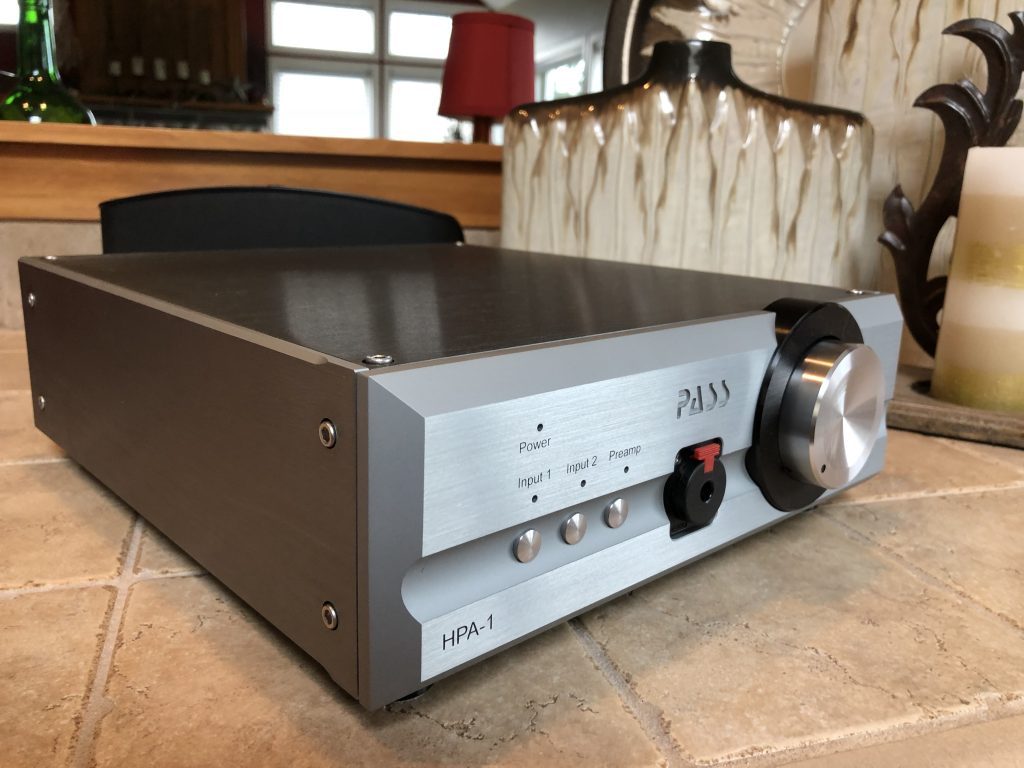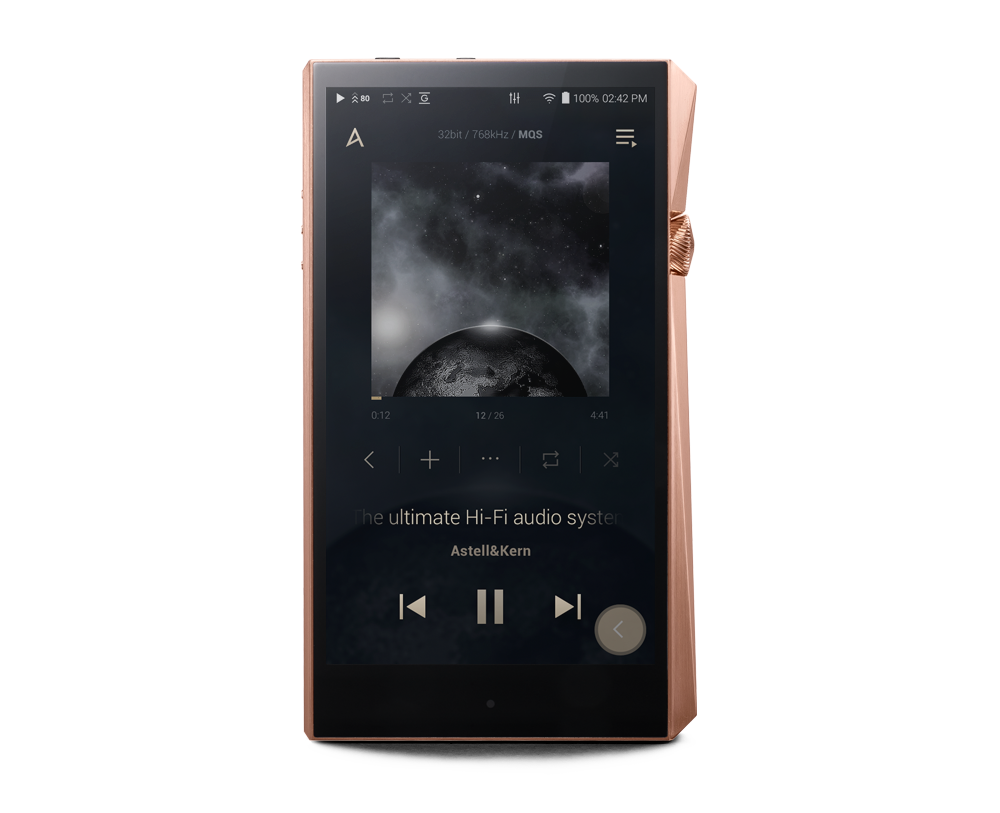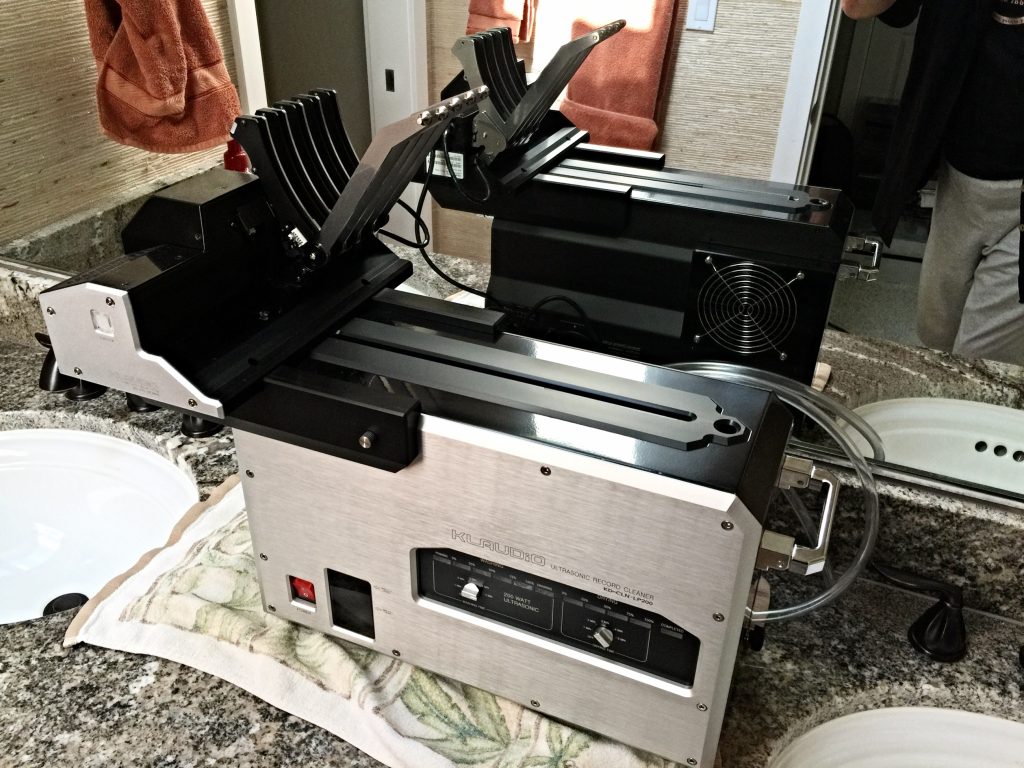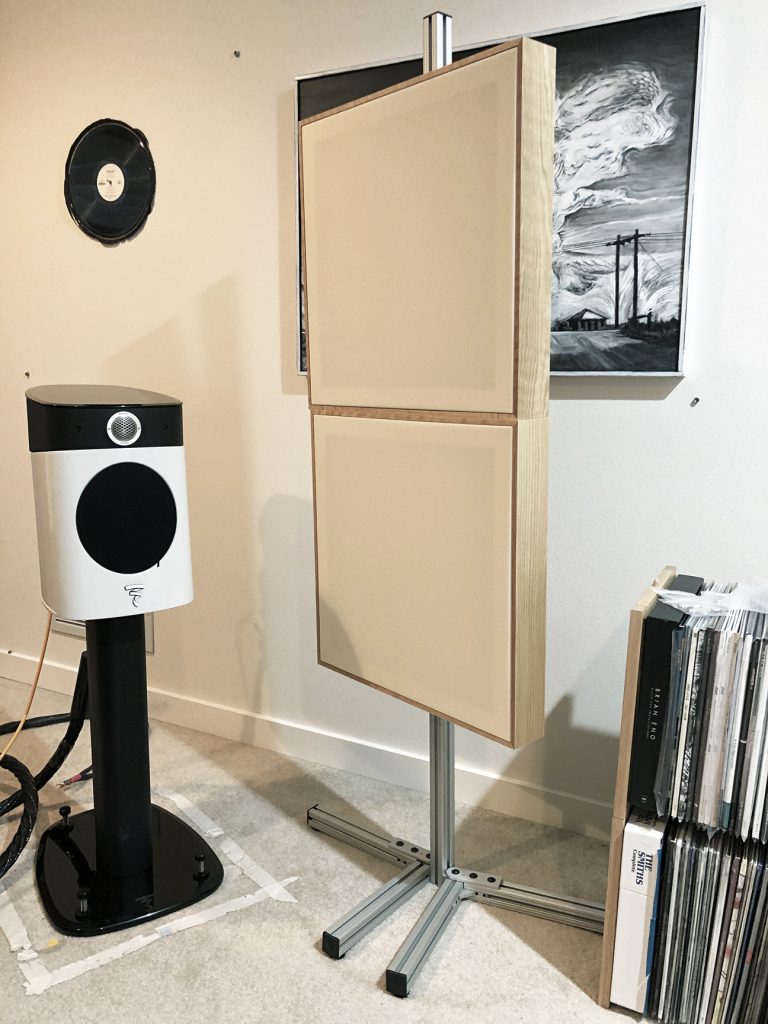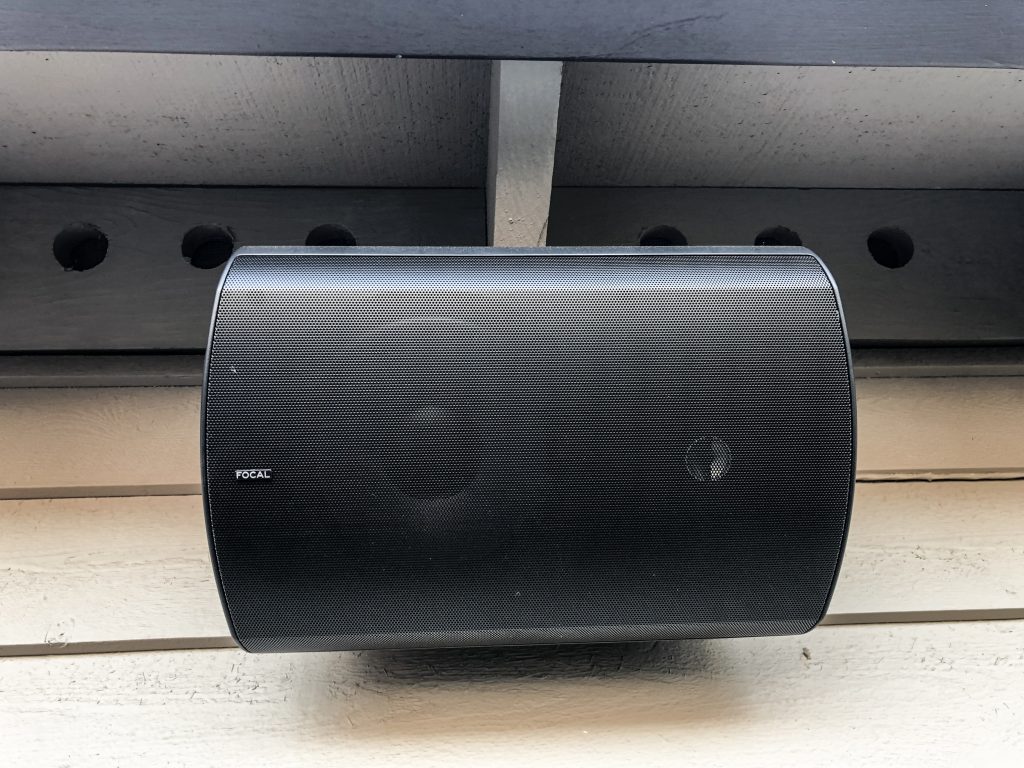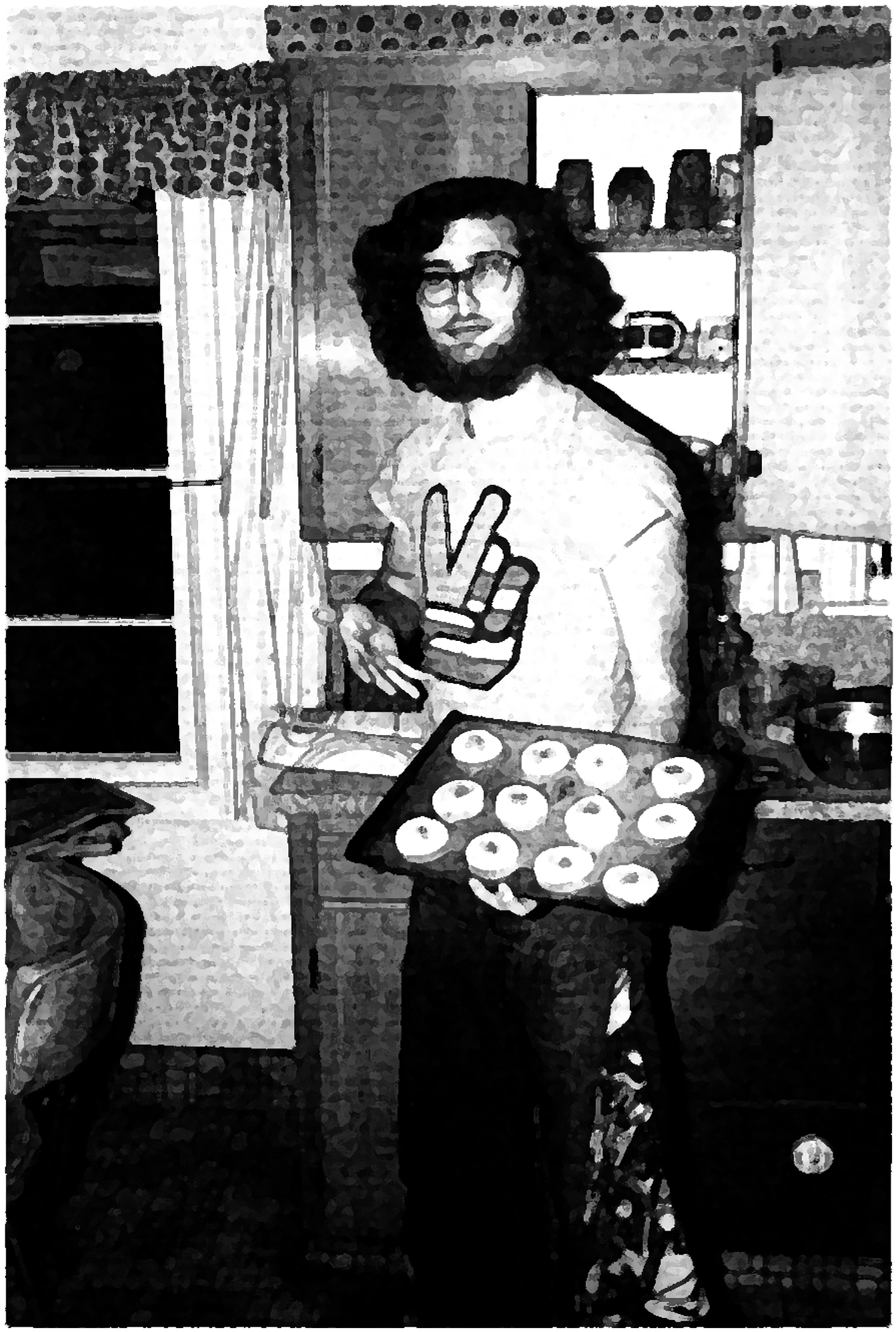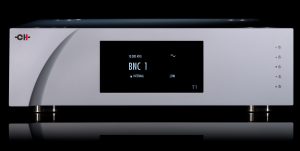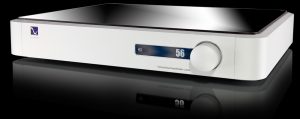In which our hero meditates… (Drawing by Robinson at a particularly boring faculty meeting many years ago….)
What's the deal with me and German designs?
In my later adult life, I've gravitated to a lot of products from our friends in Germania. While I'm not in the market for, say, guns, artillery pieces, or tanks, there are other things that sing to me.
My beastie Porsche 928GT with GTS engine: street-legal, track ready!
Lessee: Audionet. Porsche. MBL. BMW. TIDAL Audio. German Physiks.
…and then there was my beloved BMW M3 Hard-Top Convertible, another heartthrob.
And now, as it turns out, T+A. Let me tell you about that...
The setting for a vetting
The T+A DAC8 DSD, front view (operational here, at 8x DSD, 22.6mHz sampling rate)
Before I dig into the T+A, you should know that my notes on their DAC8 DSD DAC were developed and compiled as part of a larger project. The superset here is a larger project that started back in 2016, when Edward Hsu of Sound Galleries and I first hooked up about their fascinating SGM2015 Music Server. The SGM2015 is an extraordinary audio device, and will be receiving its own attention from me, but I want to make you aware of the framework it provides for DACs like the T+A DAC8 DSD. You should also note that this review covers only the performance of the T+A DAC8 DSD while used in connection with the Sound Galleries Music Server.
The brilliant Sound Galleries SGM2015 Music Server (image courtesy of Sound Galleries; additional image processing by Robinson)
But now I'm going to break the thread about things German: Sound Galleries is HQ'ed in Monaco, with engineering happening in The Netherlands. Killer stuff that isn't from our audio clan of German brethren: credit where credit is due, eh?
For those of you who would like to read more about the SGM2015, you can do two things:
Visit the Sound Galleries Web site and read the detailed description of the SGM2015 design. You'll find that HERE. It will certainly give you a helpful overview of what went into the SGM2015 from Sound Galleries' standpoint. There's no point in my rewriting this material; you should read what's on the SG site.
Second, this isn't the first time that Positive Feedback has addressed the SGM2015. For those of you who would like to read our first take on the brilliant work that Sound Galleries has done with the SGM2015, you have but to go to Bill Malcolm's excellent evaluation back in September of 2016; you'll find his comments HERE. I would strongly recommend that you read Bill's article before going any further with this one.
Once you've read both of these sources, you'll be ready to go on with what I have to say here.
The swirl of audio synergy...allusive painting courtesy of Dan Zimmerman
My comments on the SGM2015 are inescapably bound to the attached DAC, so my evaluation of a given attached DAC will be interwoven with the SGM2015. (In this review, it is the T+A DAC8 DSD; this will be followed by my comments on the SGM2015 serving the Nagra HD DAC in DSD128 [Double DSD] mode.) The conundrum of synergy is very evident in these cases, as chickens chase eggs, and eggs drop from chickens hatched from eggs. There can be no complete untangling of the music server from the DAC, any more than I suppose that an MC cartridge can be separated from its associated tonearm and turntable.
Sound Galleries itself calls the SGM2015 "DAC-indifferent." Caveat lector. But thus far in my experience, quite true, and properly flexible. What Sound Galleries has done is to carve out a unique niche based upon pure performance within the world of music servers. This is a very important development…a new audio category, a different kind of appliance, is emerging here. And they say if a particular DAC isn't already supported in their library of configurations, they can develop it quickly.
In summary I can say that the SGM2015 has proven itself to be a state-of-the-art reference benchmark this year. A complete audio computer system, with an i7 processor, 16GB DDR4 RAM, an ultra-accurate motherboard system clock, highly-tuned power supplies, solid-state drive (SSD) internal storage ranging from 1TB to 4TB, and a special heatsink constructed of CMC-milled copper-billet, which allows fanless operation (absolutely essential with music servers. There are multiple USB connections, one for an external DAC, and one for an external hard drive (USB 3.0).
The mothership: The Sound Galleries SGM2015 on the Stillpoints ESS Grid Rack, resting on Ultra V Isolation Feet
The system runs on a kernel-plus-desktop version of Windows 10, with audio processes installed and optimized for music serving. The SGM2015 has HQPlayer licensed and embedded, and is also Roon-ready. I was able to setup Roon to access my Tidal HiFi account (44.1kHz/16-bit files in FLAC [Free Lossless Audio Codec] format, which compresses audio files without loss to data content when uncompressed at the far end. The good news is that "the far end" in the SGM2015 is HQPlayer. HQPlayer is an exceptionally sophisticated digital music playback application, with over 1,000 settings available for the optimization of the music that it processes. Frankly, it's far more than most audiophiles would be able to handle, and would be daunting even for many computer jockeys, as well. It would be very easy to screw HQPlayer up, or get lost in the weeds of its many configuration screens.
Sound Galleries has gotten around this by providing remote configuration, updating, tweaking of the HQPlayer/Roon applications, and other support. This is done securely via Team Viewer (remote connection) and VNC (virtual desktop operations for Windows 10). Having worked with Edward Hsu and the remote support system included with the SGM2015, I'm impressed. It works exactly as it should. Even if you know very little about computers, networking, and music servers, you should be able to use the Sound Galleries music server without too much hassle.
T+A Description and Specifications
The T+A DAC8 DSD is to the right, third shelf down, in our Stillpoints ESS Rack #2. It is on the Stillpoints Grid Shelves, standing on Stillpoints Ultra V Isolation Feet. On the top shelf of rack #2 is the Sound Galleries SGM2015 Music Server.
So much for the SGM2015 home base. Now for the downstream T+A DAC8 DSD.
This was the first DAC that Edward Hsu recommended that we try with their SGM2015 Music Server. They had seen great results with this DAC, and it had become a favorite recommendation of theirs.
A review of the T+A Web page for the DAC8 DSD reveals why Sound Galleries was so enthusiastic. Hitting the highlights that caught my eye…and why:
- Native DSD up to 8x (DSD512), which was important since the SGM2105 Music Server is able to output at up to DSD512. I wanted to be able to run full-tilt at the highest DSD resolution, and the T+A DAC8 DSD could handle that.
- T+A 1-bit processor, completely separate from the PCM processing path. As stated on the T+A site, "For the purpose of handling DSD data which can be supplied via the PC-USB input we have developed a unique, dedicated converter: the T+A True One Bit DSD Converter. This is of fully analogue construction and constitutes a genuine one-bit converter, since—unlike other manufacturers—we did not want to use the DSD mode of a PCM converter. This development ensures that DSD data are processed in a genuine one-bit stream process, uncoloured and without detrimental additional conversion, as in our PDP 3000 HV High-End DSD / PCM player." As it should be.
T+A DAC8 DSD circuit board detail (image courtesy of T+A)
- The analog section looks thoughtfully done and well executed. T+A states, "The "State of the Art" analogue stages are of fully discrete and symmetrical construction, and do not employ OP-AMPs. Their linearity is not a function of "hard" negative feedback, as is typical of OP-AMPS, but rather due to the quality of the circuit design and the components employed, which are selected and matched to very fine tolerances." The lack of op-amps is a real plus.
T+A DAC8 DSD, rear view (image courtesy of T+A)
- The input/output set on the DAC8 DSD is very solid, and covers the essentials. On the digital side, these include: USB input (supporting up to DSD512 with the SGM2015, and with Windows computers; Macs are supported up to DSD128); four S/PDIF coax inputs (PCM up to 192kHz/24-bit) and one TOSLink optical (up to 96kHz/24-bit); one AES/EBU input (up to 192kHz/24-bit). Analog outputs are the usual RCA unbalanced, and XLR balanced outputs, plus a coax digital out.
- The case is reasonably compact, but not too much so, being 3.74 inches high x 10.6 inches wide x 10.6 inches deep. The weight is 8.8 pounds, so it's easy to handle.
- The chassis is made of an attractive aluminum with a sharp-looking black front display with clear layout of all key functions and modes of operation.
Overall, I'd say that the DAC8 DSD is a handsome DAC with some real engineering chops, and a very intelligent design. If you would like to review the specifications in detail, you'll find them HERE.
Setup
The T+A DAC8 DSD in its place on the Stillpoints ESS Rack on Ultra V Isolation Feet
Edward Hsu had come out in late January from Monaco, Sound Galleries' home base in Europe, to set up the SGM2015 with the T+A unit. The T+A had arrived, but unfortunately the SGM2015 was not delivered on the promised day. This meant that Edward and I had a pleasant conversation, and spent some time in the listening room, but that we really weren't able to do any substantive work on getting the audio rig together. Frustrating, that.
Edward Hsu of Sound Galleries, Happy Valley, OR, 2017: Portrait by David W. Robinson
So Edward had to depart, and the installation had to be done with me handling the physical end here in Oregon, while Edward Skype'ed with me to direct the connections, and then to remotely configure the software. I installed and setup VNC (the Virtual Network Connector) app, which allowed my workstation to see the internal Windows 10 desktop on the SGM2015 Music Server.
I had connected the SGM2015 to the T+A DAC8 DSD using a USB cable that Sound Galleries had recommend. It was from Sablon Audio, a company that I was not familiar with. Mark Coles of Sablon had sent along his best earlier model, which was superseded partway through this project with his new top-notch model, the Panatela Reserva Elite. In passing, I will say that this USB cable has certainly shown itself to be a very fine design, and has provided remarkably clear and musical performance throughout the months since early March that it has been in the signal chain. Note to all: The Sablon Panatela Reserva Elite USB cable is really good stuff. If you'd like to read more about Sablon Audio, read Bill Malcolm's Positive Feedback review in Issue 82 HERE, or Dave Clark's comments in that same issue, over THERE. My comments here about the Reserva version sum up Sablon Audio's latest iteration of their Panetela USB. As I said, very tasty.
Once that was up, I spent some time doing basic configuration of the SGM2015 system, but even though I am very experienced in information technology, I could see that there was much more that would be needed to complete the work. The T+A documentation was solid, but the Sound Galleries guides were rough and incomplete. (I suspect that they have made some progress since we received the delivery of this unit.) It was time to call in the reinforcements…which is exactly what Sound Galleries intends that you do. That's why their remote access system has been so carefully worked out.
I installed and initialized the TeamViewer app, which allowed Edward and me to connect securely via the Internet, so that he could get to my workstation. From there, he was able to grab VNC on the SGM2015, see everything there, and begin the configuration of HQPlayer (remember all those parameters?!), tie in Roon, and then connect to those to the Positive Feedback Tidal HiFi account.
(He takes a breath.)
Although this sounds daunting in description, in actual practice, the setup was pretty smooth, and didn't take an unacceptable amount of time. After debugging a cable connection problem, and rebooting a time or two, the connection between the SGM2015 and the T+A DAC8 DSD came up correctly, and we were running in 8x DSD mode in the feed from the server to the DAC. This was really the point of the exercise, so far as I was concerned: hearing the T+A take the 8x DSD feed from the SGM2015, and listening to what all of the excitement was about for myself.
Unindicted Co-conspirators, AKA, "The System"
During the time of this review, the T+A (third from the top on the Stillpoints ESS Rack to the left, two down from the SGM2015 music server) was partnered with the following gear:
- Sound Galleries SGM2015 Music Server
- BAT VK-53 SE preamp
- BAT VK-255 SE stereo amp
- GamuT Zodiac reference loudspeakers
- Racks and isolation feet by Stillpoints and Critical Mass Systems
- Interconnects (Elation!) and USB (Realization) by Kubala-Sosna, and GamuT (speaker cables); power distribution by Kubala-Sosna (XPander)
The GamuT Zodiac loudspeaker and the BAT VK-255 SE stereo amp on a Critical Mass Systems Black Diamond amp stand
Overall, this is a highly resolving supporting cast, but without an analytical bone in its collective body. Transparent, detailed, and full-range, but never leaving the music behind. Instead, I've described the sound of the Zodiacs in tandem with the GamuT reference electronics back in Issue 92 as highly organic. By this, I mean harmonically well integrated, top-to-bottom, balanced tonally, and "Just right!" said the baby bear. I'll be addressing the BAT + Zodiacs in my next major review, where I'll write further about the flavor of the particular magic of Balanced Audio Technology.
So, that said, let's focus on the performance of the SGM2015 and T+A DAC8 DSD.
The Sound
During the time of the T+A evaluation, we ran exclusively in 8x DSD mode. There wasn't unlimited time, since we were going to check out at least one other DSD DAC later on. So readers should note that my comments are entirely about this unique opportunity to hear 8x DSD (DSD512) via the Sound Galleries SGM2015 feed for as long as possible.
Our sources ran quite the gamut. At the lower end, I listened to mountains of Tidal Music HiFi files at 44.1kHz/16-bit in FLAC format; Tidal offers a purported tens of millions of recordings, and the Roon interface makes it very seductive to spend hours going from song to song, artist to artist, and album to album. Also up were some standard PCM files in WAV format, though not too many of those. Frankly, the FLAC files from Roon/Tidal HiFi sounded pretty smashing on their own with the SGM2015 feeding the T+A.
(For those who might be wondering: No MQA support in this configuration. No interest in MQA on my part, either. Next question.)
Wavestream Kinetics Records straight-to-Quad-DSD recording of Ilya Itin performing Debussy Preludes, Book I, a key reference in all of my equipment reviews.
On the higher end, I listened to a number of DSD files in Single (DSD64), Double (DSD128), and Quad (DSD256) DSD rates. All of these were upped to 8x DSD at DSD512, the highest rate supported currently by the SGM2015 and the T+A DAC8 DSD. This would be the stair-step acid test for me. These files were not streamed; instead, they were stored on the internal 1TB solid-state drive (SSD) that the SGM2015 came with. (Again, 2TB and 4TB internal SSDs are available as options.) I transferred the files to the SGM2015's SSD using Windows 10 File Explorer, with my Dell Precision T7600 Workstation handling the transfers from its array of external USB 3.0 hard drives. (For Windows 10 jockeys, I did this by mapping a logical network drive to the music share on the SGM2015 server. That made drag-and-copy operations to copy DSD files to the server trivial. Note that Windows 10's Browser system is not nearly so reliable, and has been the source of a number of complaints over time. In my experience, sometimes the Network Browser [under the "Network" stub in File Manager] works correctly, but often it loses objects unpredictably, and cannot find them for indeterminate amounts of time. Drive mapping is not hard to do, and works reliably. A word to the wise and all that….)
All of this allowed me to continue to update the music that we used throughout the time that the T+A was here. Since we have terabytes of music files, this was the only way to go…a constant rotation of music, internally and via streaming.
When it came to Tidal's HiFi streaming music via Roon, properly optimized by Sound Galleries, the T+A/SGM2015 made an astonishing impression upon me. I have used or heard other streaming solutions that take the source FLAC format via Roon/Tidal and use their own implementation of PCM processing to handle the feed. In fact, I've heard some very good results using that approach, sounding even better than I would have expected.
But I must say that those paled noticeably in comparison with the SGM2015/T+A DAC8 DSD's performance via conversion of 44.1kHz/16-bit FLAC to 8x DSD. In fact, the FLAC files played back here did not sound like CD-quality music at all. Almost shocking, really.
No, it did not sound like a native DSD recording, or analog transferred directly to DSD, or great analog, but PCM FLAC was rendered in a way that made it impressive and really fine to listen to for long stretches of time. (Not the usual short stretches, or only as background music wallpaper, or only suitable for car audio.)
Instead of being Red-Bookish in presentation, with the added convenience of streaming and online database capabilities (those added items are of course the intense lure of online music like Tidal, Spotify, and Apple Music, for example)…you know, the usual sort of flattened, mashed, edgy sort of thing that drives you back to LPs, DSD, SACDs, and RTR tape…the Tidal FLAC files took on real life, feeling a great deal more like music! Regardless of the artist/album…and I listened to tons of them during these months (far too many to list)…the gains that conversion of FLAC to 8x DSD playback wrought were simply amazing. Period, and without exception.
Joni Mitchell and John Michael Talbot in the Roon interface on my iPad Air 2…an excellent interface!
Certainly the sort of PCM edge-and-glare that is the bane of Red Book was taken off or greatly ameliorated by the incredible scrubbing that the SGM2015 brought to the task. By taking the source file to DSD and oversampling an additional 511 times per PCM data instance, the stair-step "curve" of Red Book was transformed into something that was much more listenable on that front. Ditto with dynamics and transient moments.
The Smiths in the queue behind John Michael Talbot…eclectic, for sure.
Whether Neil Young, Joni Mitchell, Bob Dylan, Lou Reed, Sufjan Stevens, M. Ward, The Smiths, Phish, Leonard Cohen, Miles Davis…on and on and on…in FLAC, there was an ease that simple playback in the PCM domain would not achieve, in my experience.
There were also tons of Single, Double, and Quad DSD albums available locally, and copied to the SGM2015's 1TB SSD for easy access. Some were ripped from SACDs; some were tape transfers or needle drops to Double or Quad DSD; some were downloads at various resolutions; some were direct-to-Quad-DSD recordings. These were all over the block when it came to genres and musical tastes…some great diversity, but all at reference-level quality.
The effect of taking Single, Double, and Quad DSD files through to 8x DSD via the SGM2015/HQPlayer combination, and feeding the T+A, was really intriguing. I'd summarize it this way:
- Single DSD benefitted the most. There seemed to be a definite enhancement to details, some to timbre/texture, some to image specificity, and some little bit to tonality and smoothness. There was also a tad more depth to the recordings.
- Double DSD was more subtle. The improvements I noted were as above, but not to the same degree. Soundstage depth differences were minute-to-vanishing.
- Quad DSD demonstrated the least improvement, having enormous native capabilities in all of these areas already. Any effects will be subtle, varying according to the capabilities of the rest of the listener's system.
- Regardless of DSD resolution, there was no DSD recording that was negatively affected by the processing at 8x DSD, and most were helped, at least a bit. The tougher call was with Quad DSD, as noted.
Sitting back and listening to this combination using Roon, Tidal HiFi, and our local DSD files with my iPad Air 2 was seriously addicting. Millions of songs available…easy database look-ups…a clear interface. The next thing you know, one thing leads to another. This song reminds you of that song which drifts you over to that song; one artist brings to mind that group which sucks you into that other compilation. Reveries strike! The next thing you know, hours have passed and you realized that you've been flying through clouds of memory, near and far, now and then. That's the grand advantage of online music done rightly: the incredible power to explore enormous archives of online music, and to listen without sonic or musical compromise…streaming at an audiophile level.
At last.
In fact, I'm doing that right now, as I write this impressions essay. Greg Brown and John Michael Talbot right now, 44.1kHz FLAC sources…quite fine, and way beyond the sonic results that you usually have with PCM.
This is really, really good.
Quibbles?
No.
Just a few things to keep in mind here…not really quibbles.
You'll want to be sure that you have accounts with Roon and Tidal HiFi in advance of installation. This will make the process of setting up the SGM2015 Music Server a smoother process.
Make sure that your local network, router, and Internet connection are all in order before setup. Know all of your access parameters before you begin.
The SGM2015 is sensitive to its USB connection. Make sure that you have a high-quality USB cable, and that it is properly inserted. Avoid unplugging and re-plugging your USB cable while in operation; the SGM2015 and T+A DAC8 DSD can have trouble re-synching the connection if you aren't careful.
All of this means that it is well to have some computing and networking chops before you jump in on an extremely sophisticated setup like this. If you don't, then let your dealer, a computer audio expert, or the good folks at Sound Galleries handle the setup for you.
Finally, every now and again the Roon software on my iPad Air 2 would get a bit lost maintaining its connection with the SGM2015. No biggie; a simple close-out of the app and an immediate restart fixed the problem. The music played on.
Otherwise, no problems. This combination was reliable and trouble-free during its time here. Extremely impressive results, really.
Conclusion
Reflections time. Time to pull this particular combination together in my mind…
And well, I've got to say it: The combination of the Sound Galleries SGM2015 and the T+A DAC8 DSD turns streaming music into a real magic carpet ride. I listened for months, and had a number of visitors into our listening room during that time. The consensus was unanimous: Everyone from casual listeners to industry pros were really knocked out by the Sound Galleries SGM2015 Music Server paired with the T+A DAC8 DSD. There was not one negative reaction during all of the time that the T+A unit was here. Just a lot of "Wow!" going down. Nor have I had a bad moment listening to this tandem…the streamin' just kept streamin' along.
No doubt about it. This is a fabulous music server, and a remarkable DAC. The two of them make beautiful music together. And at a combined price of USD$20,000…well, you can spend a lot more money than this in this high-end audio category. A lot more.
Want a music server that you can live with?
This is it.
Want a DAC that can do up to 8x DSD with excellent quality and a reasonable price?
This is it.
Want a streaming audio and DAC that can be remotely supported without hassle.
This is it.
I therefore give them a "Ye Olde Editor's very highly recommended!" with real enthusiasm.
If you have the available funds, then I don't know a better and more flexible streaming music, computer-based audio, and LAN-based DSD DAC combination at this time. Put it at the very top of your shopping list.
You can thank me later.
Sound Galleries SGM2015 Music Server
Price: USD $16,000 (image courtesy of Sound Galleries). Two-year warranty
T+A DAC8 DSD
In US: US$4,190
In Canada: CDN$5590
In Germany: €2950
Please note that the above US / Canada retail prices include prepaid shipping/import duties for direct delivery to US and Canadian Dealers from our German Factory.
Sound Galleries
Web: http://soundgalleries.com
Email: Check the "contact us" form at the Sound Galleries Web site
T+A
Web: www.ta-hifi.de/en
Email: [email protected]
Phone: +49-5221-7676-0
US Distributor
David Schultz
Sales Manager, US and Canada
Email: [email protected]
Phone: 207.251.8129
All photographs by Robinson, unless otherwise noted. Additional image processing for some third party photographs by Robinson. Drawing and painting by Dan Zimmerman; cartoon by Robinson. The Alice in Wonderland drawing is public domain.





